After having breakfast at the Grand Hyatt, we visited the National Dr. Sun Yat-Sen Memorial Hall again where we saw the change of guard twice and looked through the museum spaces inside. After an excellent beef noodle soup lunch, we visited the huge Chiang Kai-shek Memorial Hall before having Singaporean chilli crab for dinner at Jumbo Seafood in Xinyi. We ended the evening by walking back to the Grand Hyatt, enjoying the Christmas decorations and lights on the way.
National Dr. Sun Yat-Sen Memorial Hall
We once again had breakfast at the Grand Hyatt before getting a late start at the 國立國父紀念館 National Dr. Sun Yat-Sen Memorial Hall.

The skies were overcast for our short walk over from the hotel.

Just like our first visit three days ago, we arrived just before the next guard changing ceremony. We decided to watch it again.



Like our previous visit, the old and new guards were from the Air Force. We’re not sure when guard duty switches between the services. We recorded a few videos and snapped a few photos while we watched.


Our previous visit was short, just long enough to watch the guard change. We had more time today and picked up an English language informational pamphlet.

We started in the Dr. Sun Yat-Sen History Exhibition on the first floor. A very short timeline of his life is presented above. As the father of the Republic of China, he ended China’s imperial dynasties. The memorial’s website has a much longer and more detailed chronology of his life.

A few random facts. We definitely didn’t know he was on American stamps! I would guess that the majority of Americans would have no idea who he was.

An reproduced example of his writing.
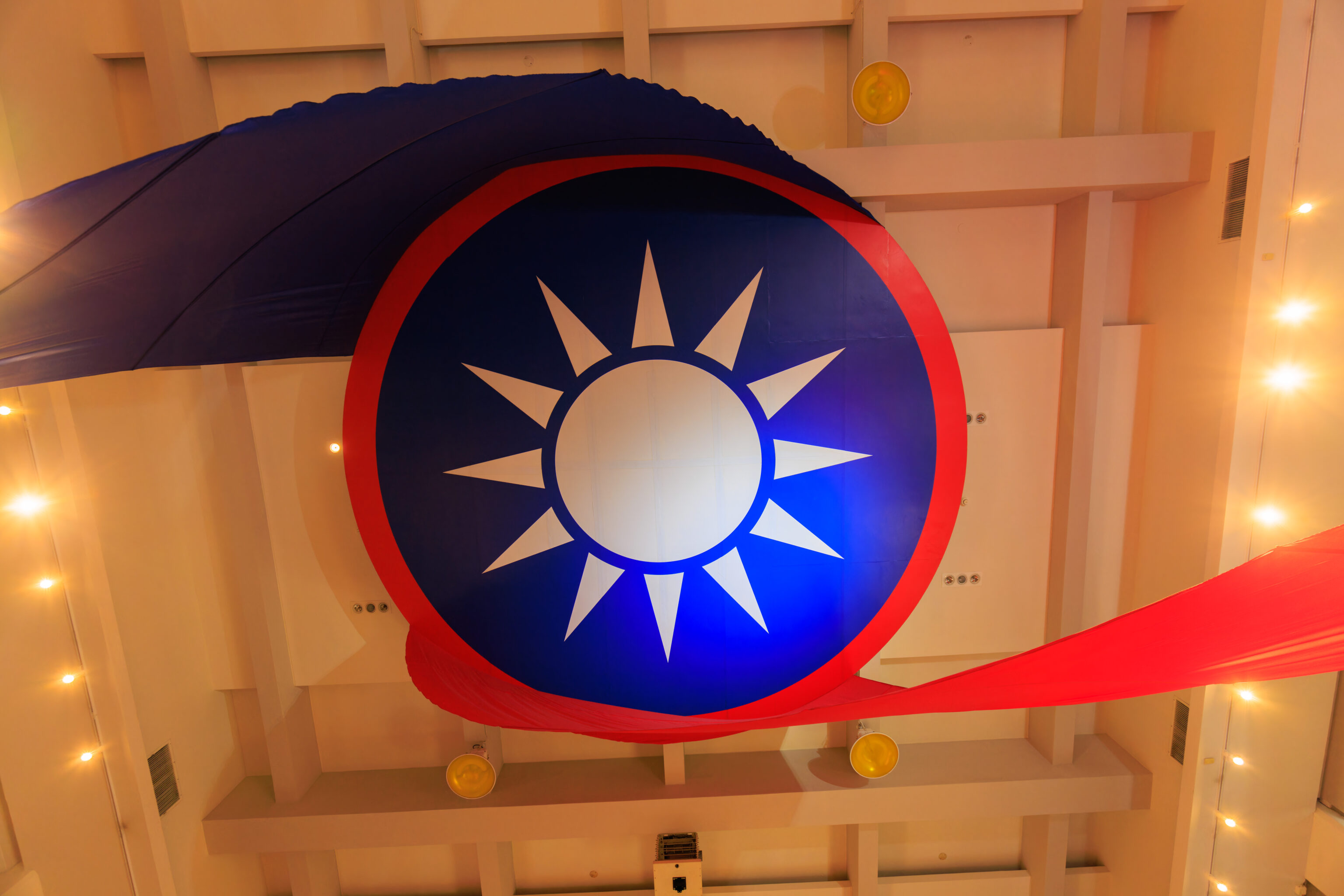
The emblem of the Republic of China, 青天白日 Blue Sky with a White Sun.

After looking through the exhibits about his life, we walked upstairs to the second floor.

Scenes from Dr. Sun Yat-Sen’s life were depicted on large metal plates. They were presented in chronological order and each had a brief explanation with English text. Additions to the text have been added in brackets.
1. Organizing the Hsing Chung Hui and Advocating Revolution Dr. Sun Yat-Sen, on November 24, 1894, established the [興中會] Hsing Chung Hui at Honolulu with the solemn pledge of "expelling Tartars, restoring the Chinese race, and establishing the republican government." On February 21, 1895, the Hsing Chung Hui of Hong Kong was founded. The revolutionary Army Flag with a white sun set against a blue sky designed by Mr. Lu Hao-Tung was approved at the meeting held on March 16. Dr. Sun then launched the first uprising at Kwangchow [Guangzhou] in October.
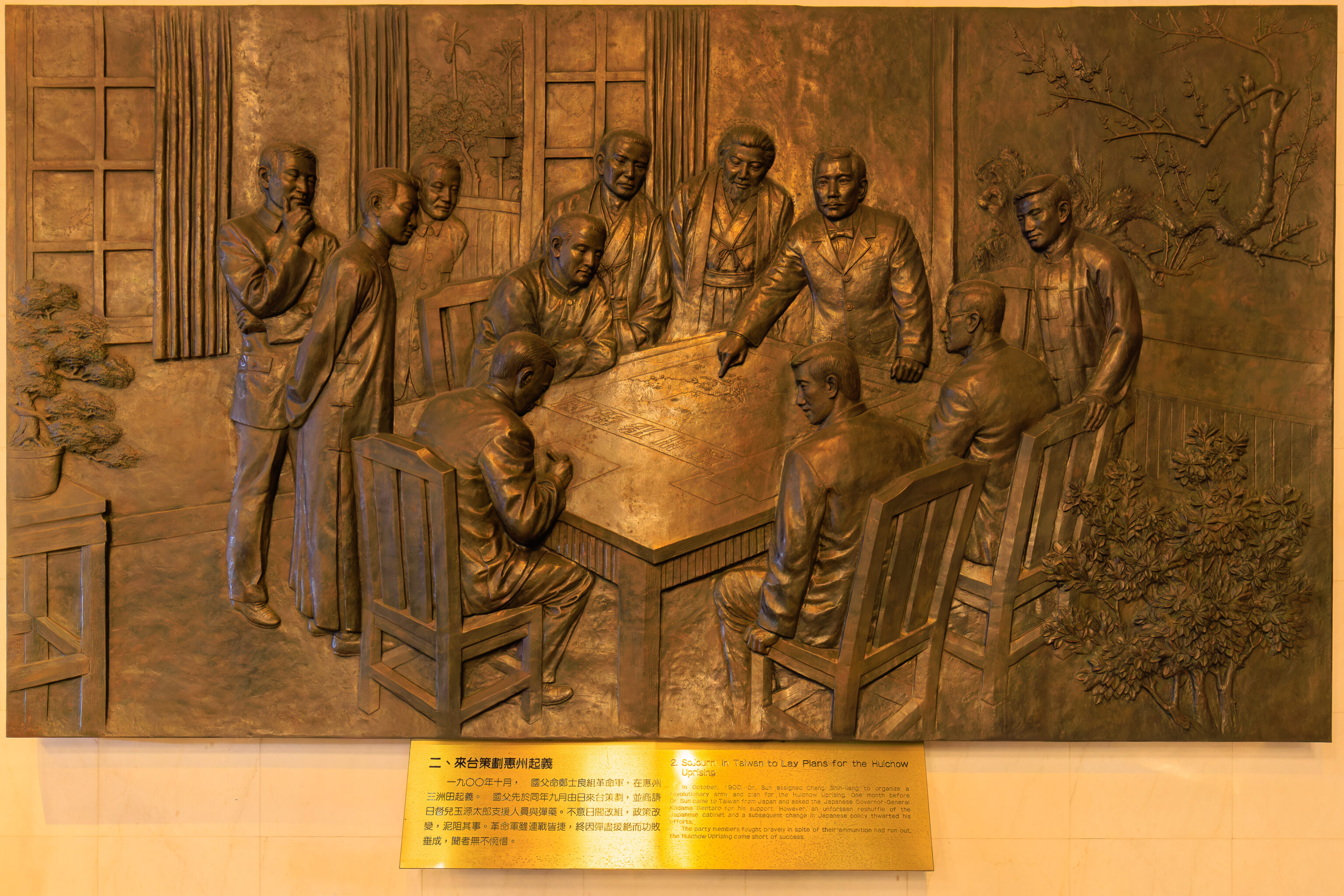
2. Sojurn in Taiwan to Lay Plans for the Huichow [Huizhou] Uprising In October, 1900, Dr. Sun assigned Cheng Shih-Liang to organize a revolutionary army and plan for the Huichow Uprising. One month before Dr. Sun came to Taiwan from Japan and asked the Japanese Governor-General Kodama Gentaro for his support. However, an unforseen reshuffle of the Japanese cabinet and a subsequent change in Japanese policy thwarted his efforts. The party members fought bravely in spite of their ammunition had run out, the Huichow Uprising came short of success.

3. Directing the Chen Nan Kuan [Zhennan Guan] Military Operation After the founding of the [同盟會] Tung Meng Hui, in August, 1905, Dr. Sun continued to launch several uprisings, the best known of which was the Chen Nan Kaun Uprising of 1907. With his followers such as Huang Hsing, Hu Han-Min, Hu Yi-Sheng, Ike Kyokichi of Japan, Robert Dixon of France, Dr. Sun joined the battle and personally fired a cannon against the Manchu troops. He fought the enemy bravely despite the dangers and difficulties involved, and his actions were widely publicized and praised by newspapers all around the world.

4. The Kwangchow [Guangzhou] Uprising of 1911 On March 29, 1911 (Chinese Lunar Calendar), at the behest of Dr. Sun, Huang Hsing and Chao Sheng led their comrades in the uprising at Kwangchow, where they fought fiercely against the Ching [Qing] Army. Despite an overwhelming default and the death of 72 martyrs, the event shook the entire world. Dr. Sun later stated that the 72 martyrs touched the hearts of fellow countrymen, who, accordingly, work from their long torpor... The irrepressible spirit displayed by these martyrs had a significance indeed equal to that of the successful Wuchang Uprising.

This scene is on the right wall behind the large statue of Dr. Sun Yat-Sen. It depicts the establishment of the Hsing Chung Hui at Honolulu.

We walked through this empty gallery to get to the other side of the building where the historic scenes continued.

5. Topping the Manchu Government and Founding the Republic On October 10, 1911, the revolutionaries staged an uprising at Wuchang, and restored 15 provinces to Chinese rule in three months. On December 29, the representatives of all restored provinces elected Dr. Sun Provisional President of the Republic, the first in Asia. On New Year's Day, 1912, at Nanking [Nanjing] an official inauguration was held. The Manchu Emperor abdicated the throne on February 12. Dr. Sun paid a visit to the Ming Mausoleum where he issued a reverential memorial declaring the success of the revolution and the recovery of Chinese control over the nation.
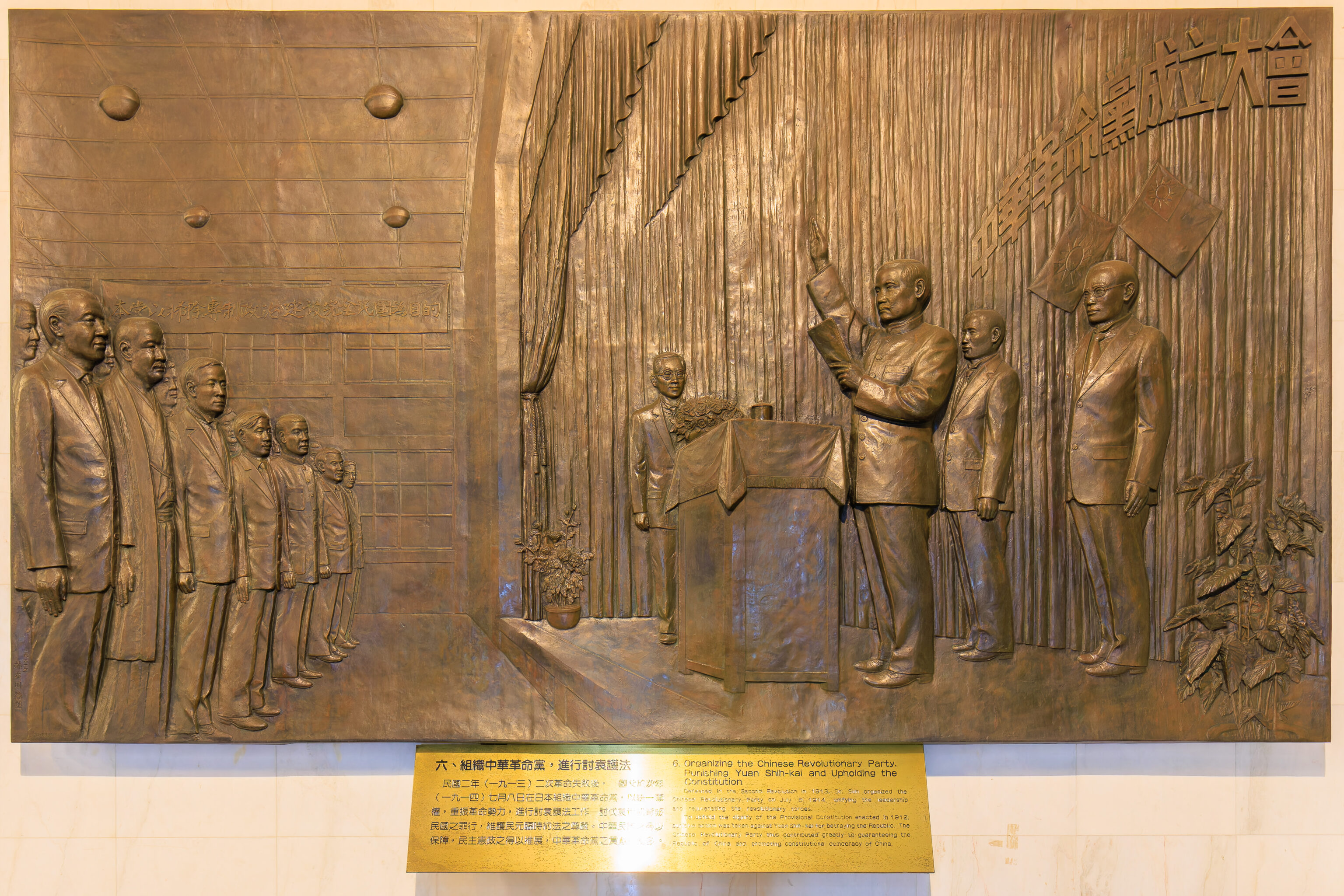
6. Organizing the Chinese Revolutionary Party, Punishing Yuan Shih-Kai and Upholding the Constitution Defeated in the Second Revolution in 1913, Dr. Sun organized the Chinese Revolutionary Party on July 8, 1914, unifying the leadership and rejuvenating the revolutionary forces. To uphold the dignity of the Provisional Constitution enacted in 1912, punitive action was taken against Yuan Shih-Kai for betraying the Republic. The Chinese Revolutionary Party thus contributed greatly to guaranteeing the Republic of China and promoting constitutional democracy of China.
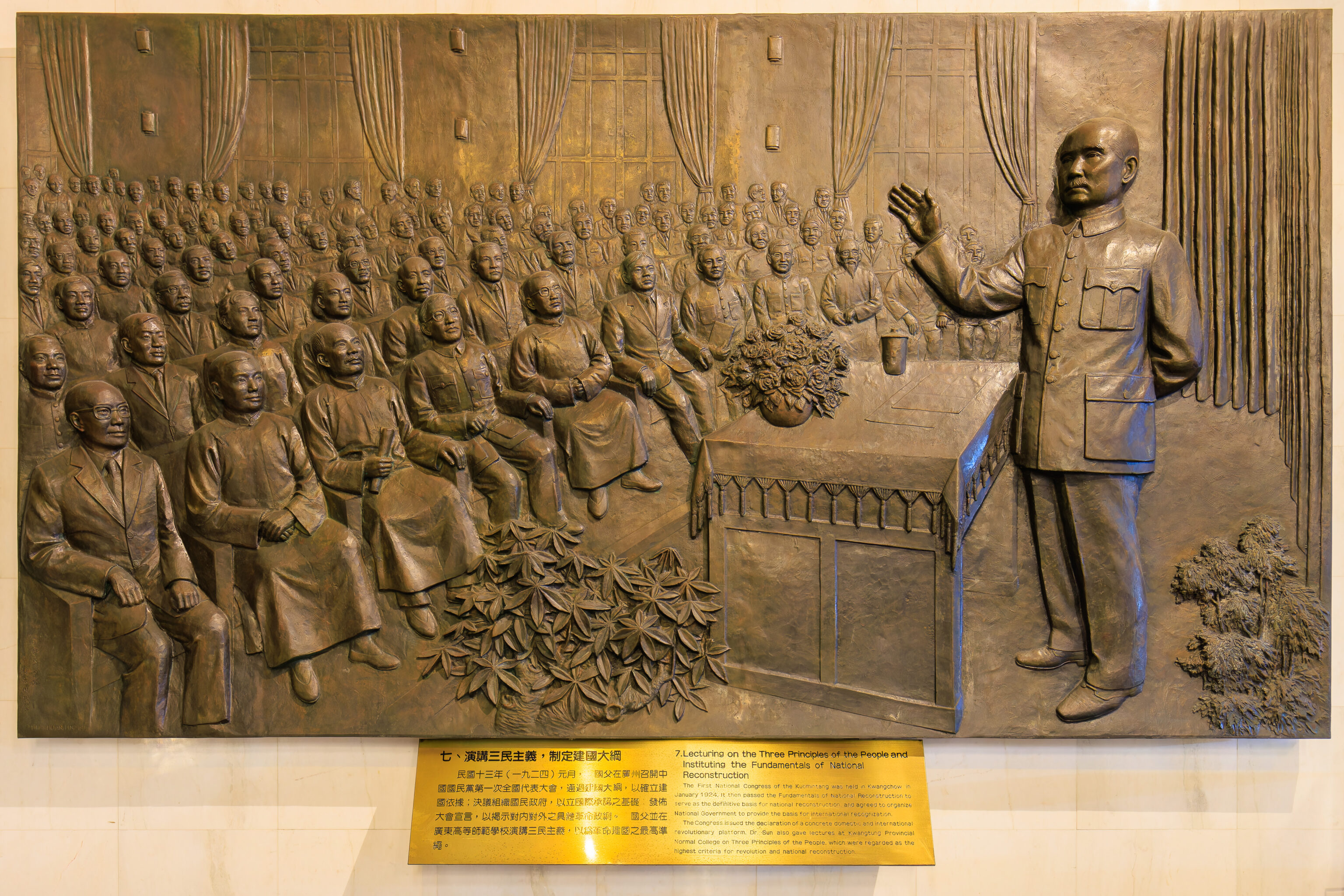
7. Lecturing on the Three Principles of the People and Instituting the Fundamentals of National Reconstruction The First National Congress of the Kuomintang was held in Kwangchow [Guangzhou] in January 1924. It then passed the Fundamentals of National Reconstruction to serve as the definitive basis for national reconstruction, and agreed to organize National Government to provide the basis for international recognition. The Congress issued the declaration of concrete domestic and international revolutionary platform. Dr. Sun also gave lectures at Kwangtung [Gungdong] Provincial Normal College on Three Principles of the People, which were regarded as the highest criteria for revolution and national reconstruction.

8. Building the Armed Forces, Passing on the Revolution Under the instruction of Dr. Sun Yat-Sen, Chiang Kai-Shek established the Whampoa Military Academy on January 24, 1924. On May 3, Chiang was appointed as the commandant of the Academy. On June 16, Dr. Sun Presided over the dedication ceremony for the Academy and gave a speech on "the profound knowledge that is the bedrock of the revolution." He encouraged all cadets to develop the the spirit of the martyrs, and to fulfill their assigned mission of defending the nation. Dr. Sun also determined that the school motto for the Academy should be its esprit de corps.

This scene is on the left wall behind the statue of Dr. Sun Yat-Sen. It depicts the founding of the 同盟會 Tongmenghui in Tokyo in 1905.





We decided to watch the next guard changing ceremony from the second floor for a different perspective.
This time, we filmed the entire ceremony!

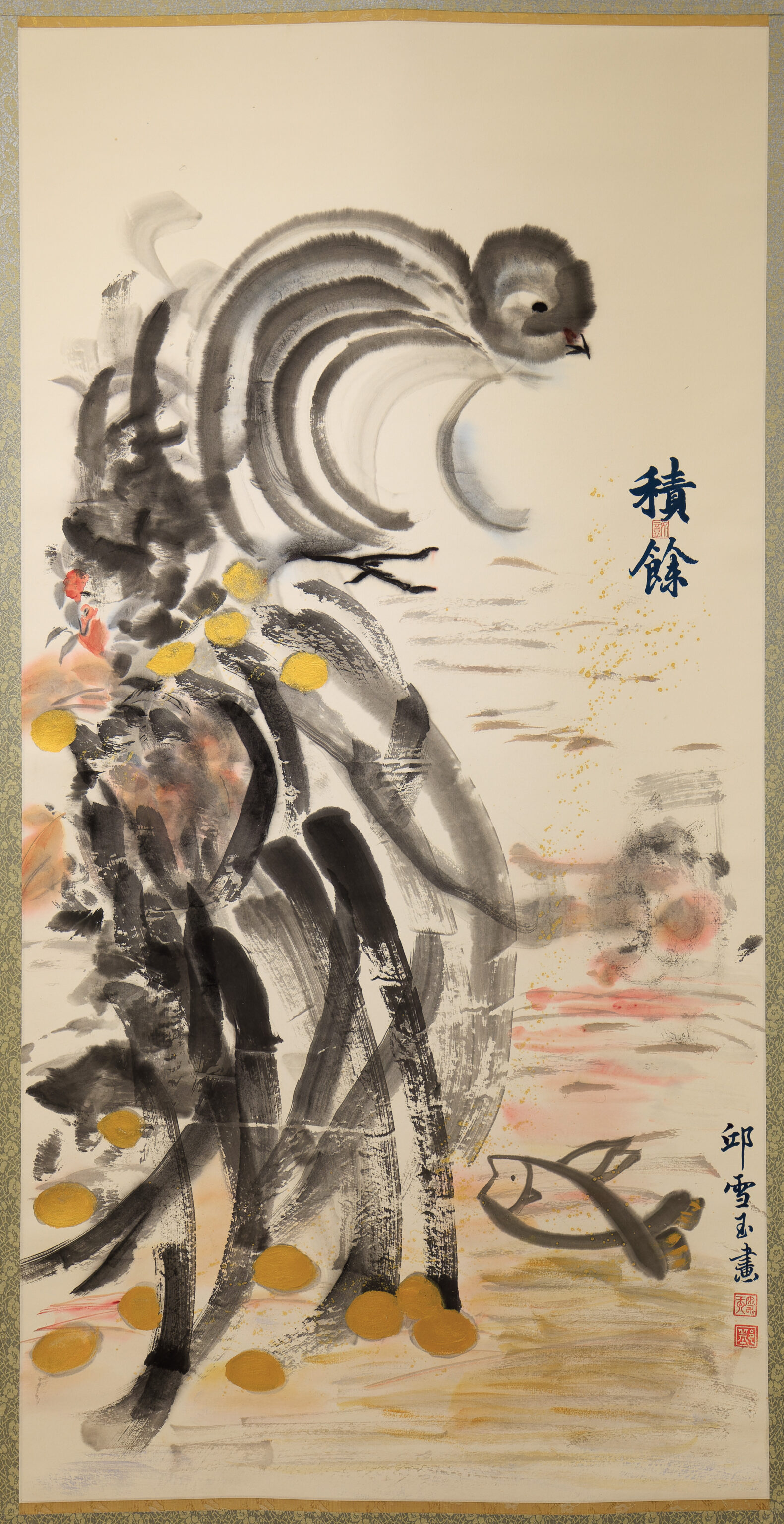



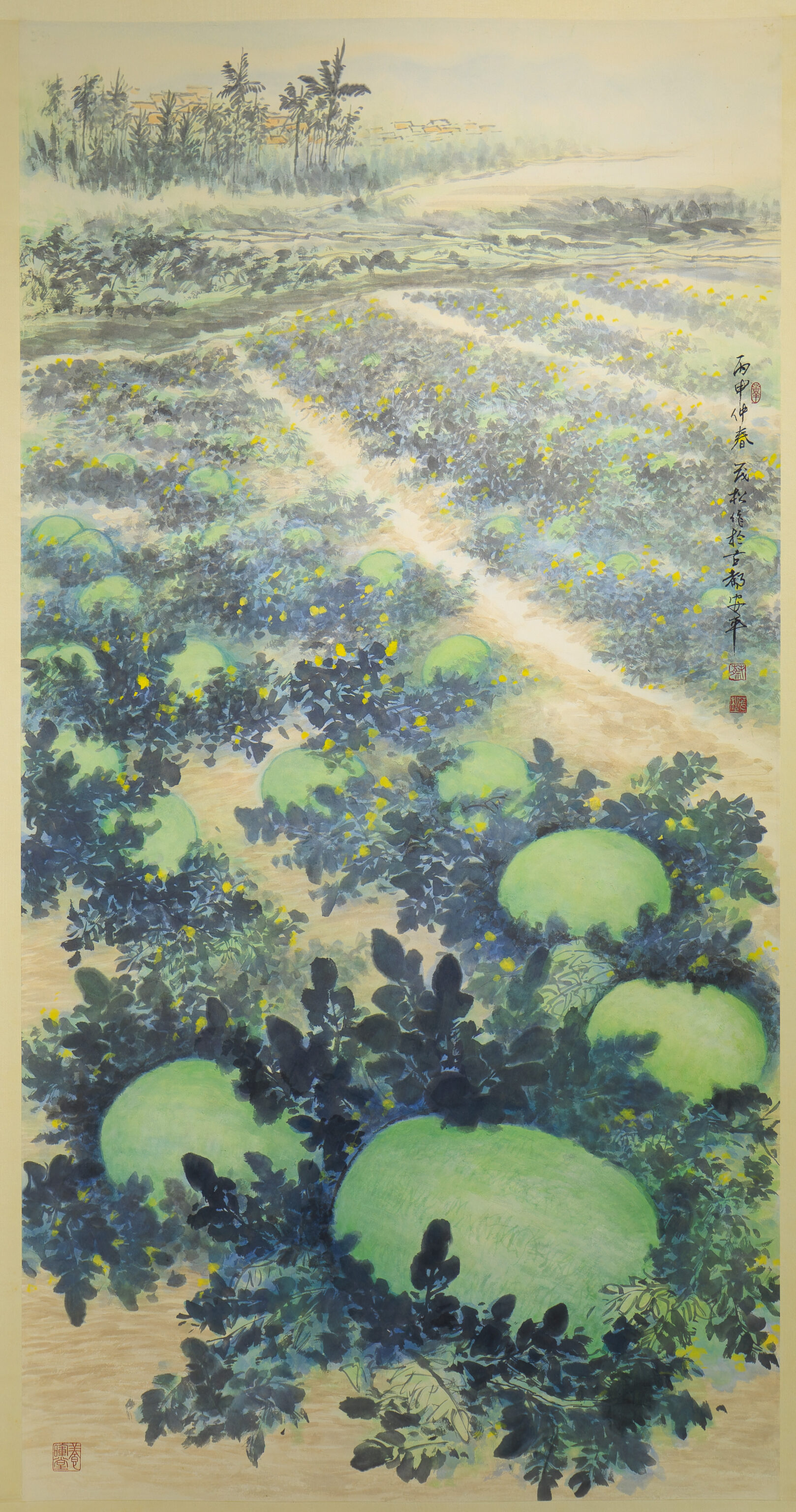
The gallery right next to where we watched was closed for renovation. However, there was a different one that was open which showcased some art.

We had lunch reservations so it was time to go. We walked over to the Sun Yat-Sen Memorial Hall MRT station by the northwest corner of the building.
Lunch
We took the MRT two stations to the west, arriving at 忠孝復興 Zhongxiao Fuxing. From there, we met up with family again and walked over to 天下三絕 Tien Hsia San Chueh. Their website proudly proclaims, “The Rolls Royce of beef noodles.”


The menu had a large selection of beef noodle soups. This was definitely a higher end experience than the average beef noodle soup restaurant, though the prices were still quite cheap by current-day American standards.
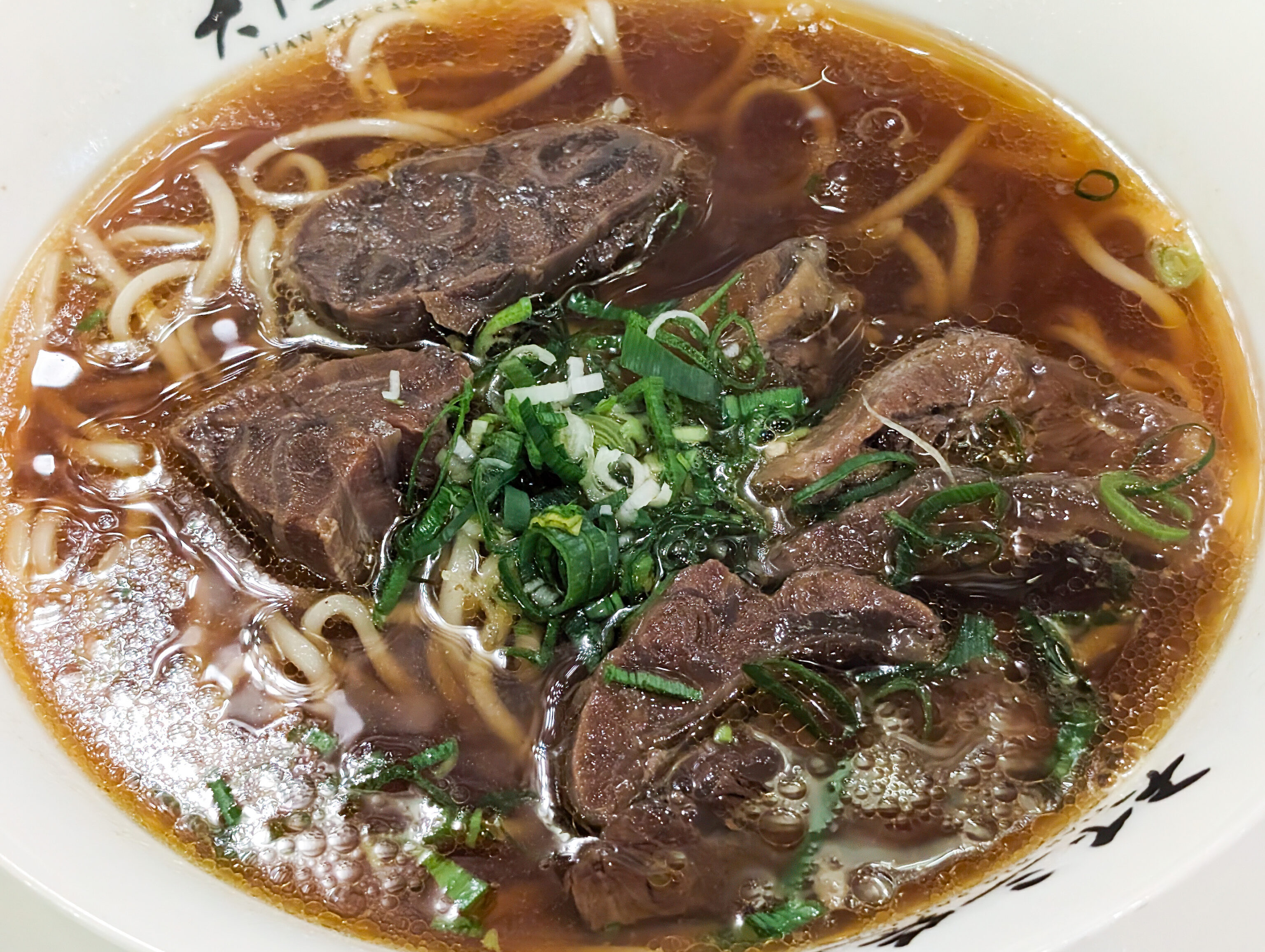

We got the Signature Beef Shank Noodle Soup, the only difference was thick vs. thin noodles. They were very good. The soup was flavorful but less oily, or perhaps fatty, than the typical beef noodle soup. The beef was extremely tender as it is supposed to be.

We also had some fried pork as an appetizer which was also very good.
National Chiang Kai-Shek Memorial Hall
After lunch, we headed over to the 國立中正紀念堂 National Chiang Kai-Shek Memorial Hall via MRT. Chiang Kai-Shek was the longtime leader of the 國民黨 Kuomintang up to his death in 1975. This time period included the loss of mainland China to the communists and the establishment of Taiwan as the new home of the Republic of China.

After arriving at the MRT at the Chiang Kai-Shek Memorial Hall station, we exited the station at the southwest corner of the memorial grounds. The ground was wet as the weather had turned to light rain. We walked to the north as the 自由廣場牌樓 Liberty Square Arch came into view on our left. The current name comes from the events that took place here which resulted in Taiwan becoming an actual democratic country, ending the long era of single party rule1.
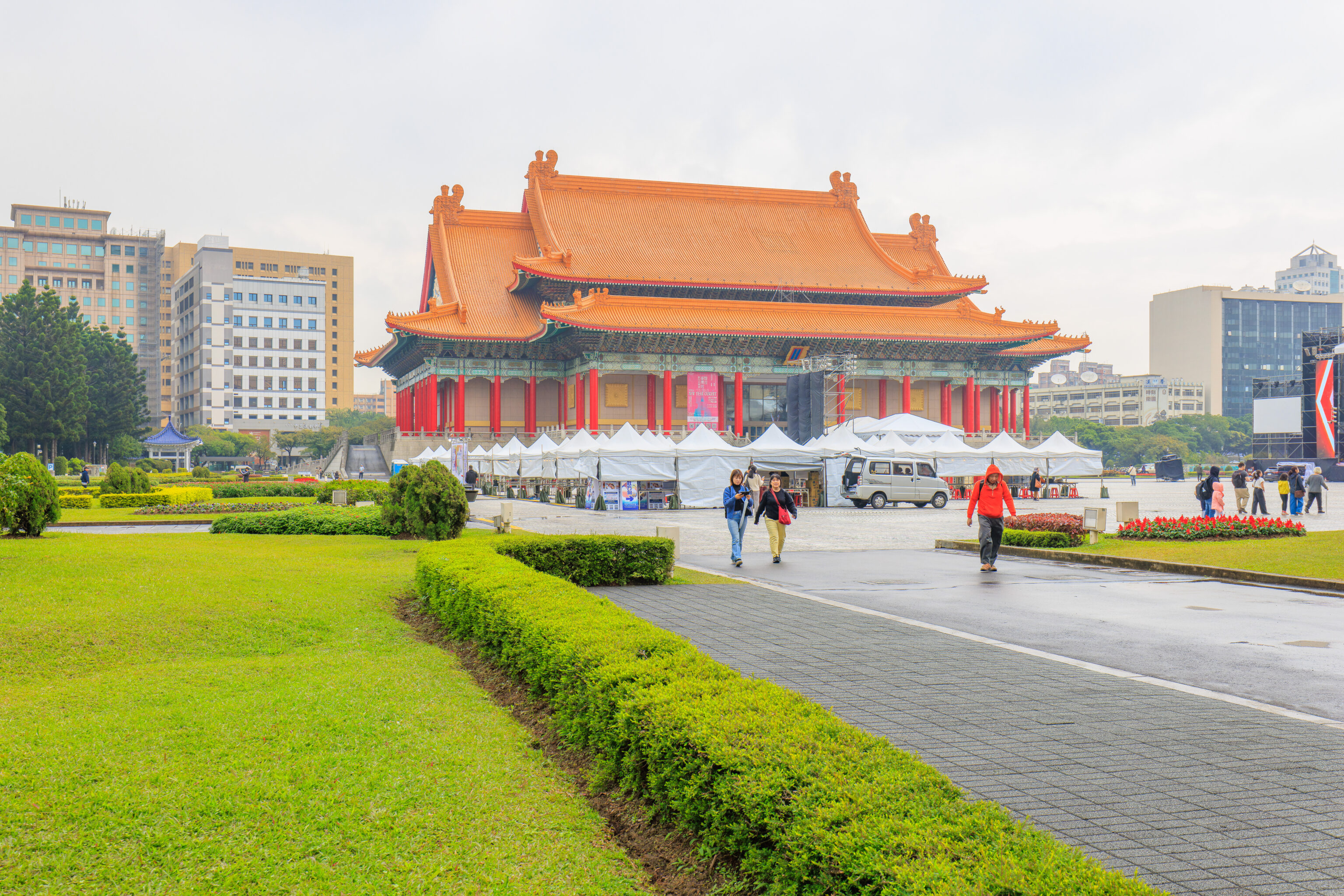
自由廣場 Liberty Square was in front of us. The square is flanked by two large buildings, the 國家音樂廳 National Concert Hall, seen here, and the 國家戲劇院 National Theatre, to our right but not here in this photo.

Once at the square, we walked over to take a closer look at the Liberty Square Arch.

Preparations were being made in the square for, we assume, the upcoming New Year’s Eve celebrations.

The National Theatre from the front. The theatre and concert hall buildings are styled similarly but have different roof designs.

The National Theatre again as we walked away from the square towards the National Chiang Kai-shek Memorial Hall.
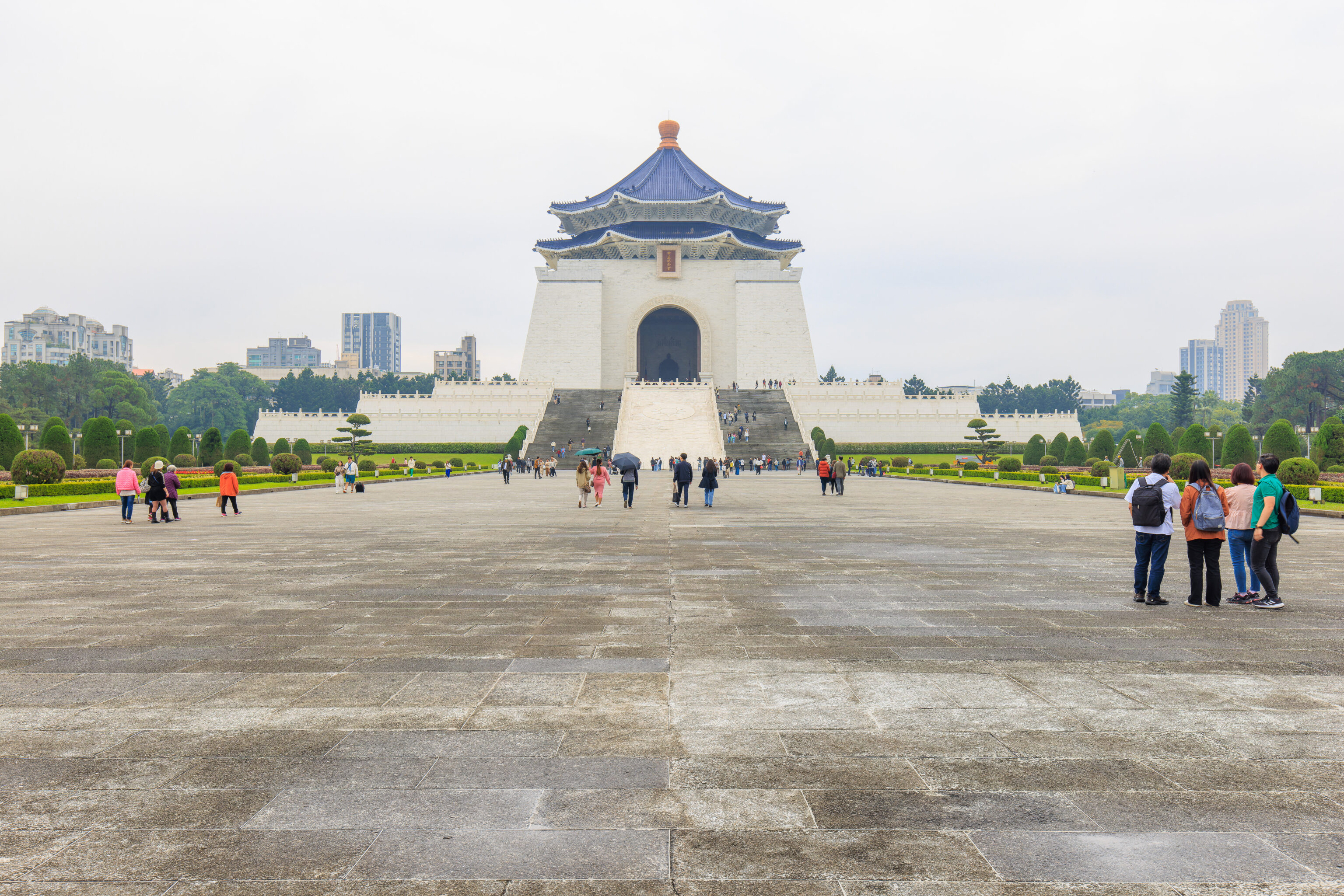
The actual memorial hall stood in front of us. The building is huge!
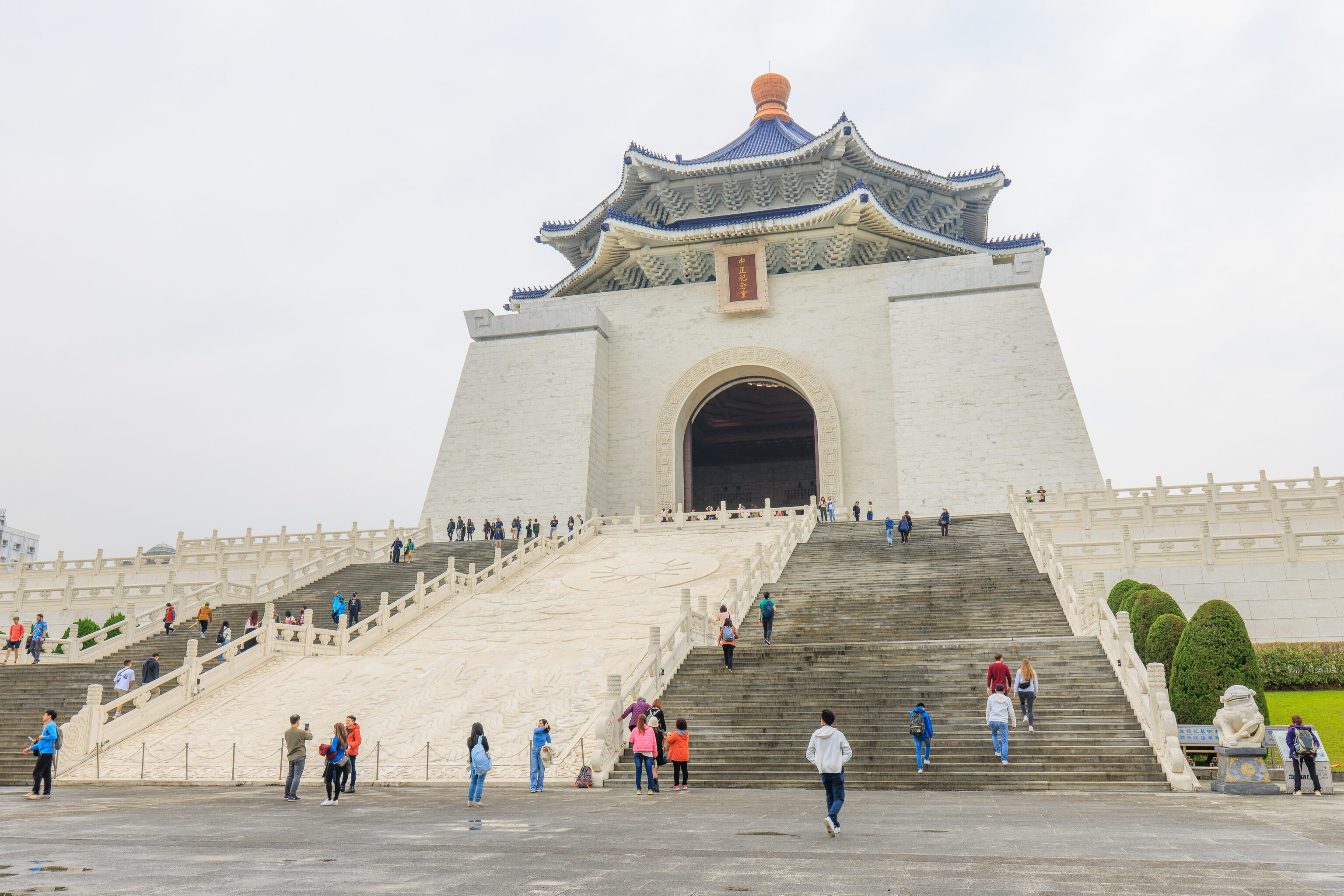
A sign on the right at the base of the stairs reads:
Main Hall Upon the passing of Chiang Kai-shek in 1975, the Executive Yuan approved the "Related Issues for the Memorialization of President Chiang." As part of this a preparatory group was formed, which decided upon using a combination of public donations and government funding to build the Chiang Kai-shek Memorial Hall on a parcel of state-owned land. The design of the park and building was put to competition, with a design by architect Yang Cho-Cheng selected. The site chosen was a former army headquarters, and ground was broken on the project on October 31, 1976. Nearly four years later, on April 5, 1980, the park was formally opened to the public. The main hall occupies an area of some 15,000 square meters and stands 70 meters tall. The roof is comprised of two octagonal layers, covered with royal blue glazed tiles, with the upper layer rising to a point. Its four walls are constructed with white marble. The combination of blue and white evokes both the national emblem and that of the Kuomintang, the party that Chiang led. The two large bronze doors to the main hall are 16 meters tall and weigh 75 tons. Leading up to the entrance is a staircase with a total of 89 steps, representing the age at which Chiang passed. In the center of the main hall sits a giant statue of Chiang seated, and behind it is engraved a selection of personal commentary by the president, while above, the caisson ceiling is designed in the shape of the national emblem, symbolizing the link between the man and the country.

From here, we looked back to see the National Concert Hall on the right, Liberty Square Arch on the left, and part of the National Theatre at the left edge.

We walked around the base of the building to enter via a side entrance. We passed by this sign for a Doraemon exhibition going on inside of the memorial hall.
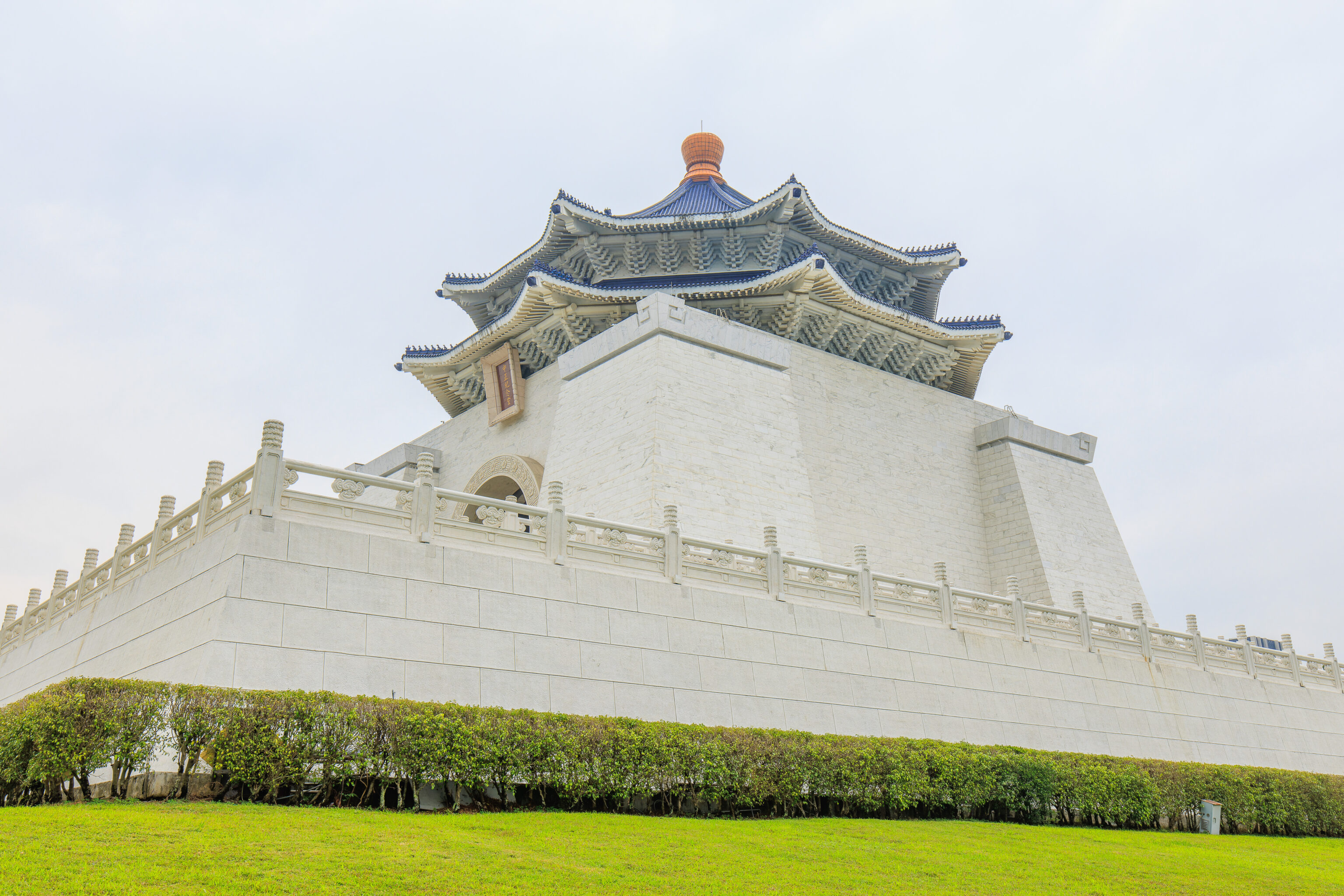
The memorial hall as we walked to the side entrance. We didn’t actually take any photos while inside the base of the building. It is a huge space. We ended up taking the elevator up to the main memorial floor.

The statue inside is huge, but is dwarfed by the large space containing it. It is rather reminiscent of the Lincoln Memorial in Washington, DC.

The emblem of the Republic of China was in the middle of the ceiling. It wasn’t possible to actually go directly under it as the area near the statue was roped off.
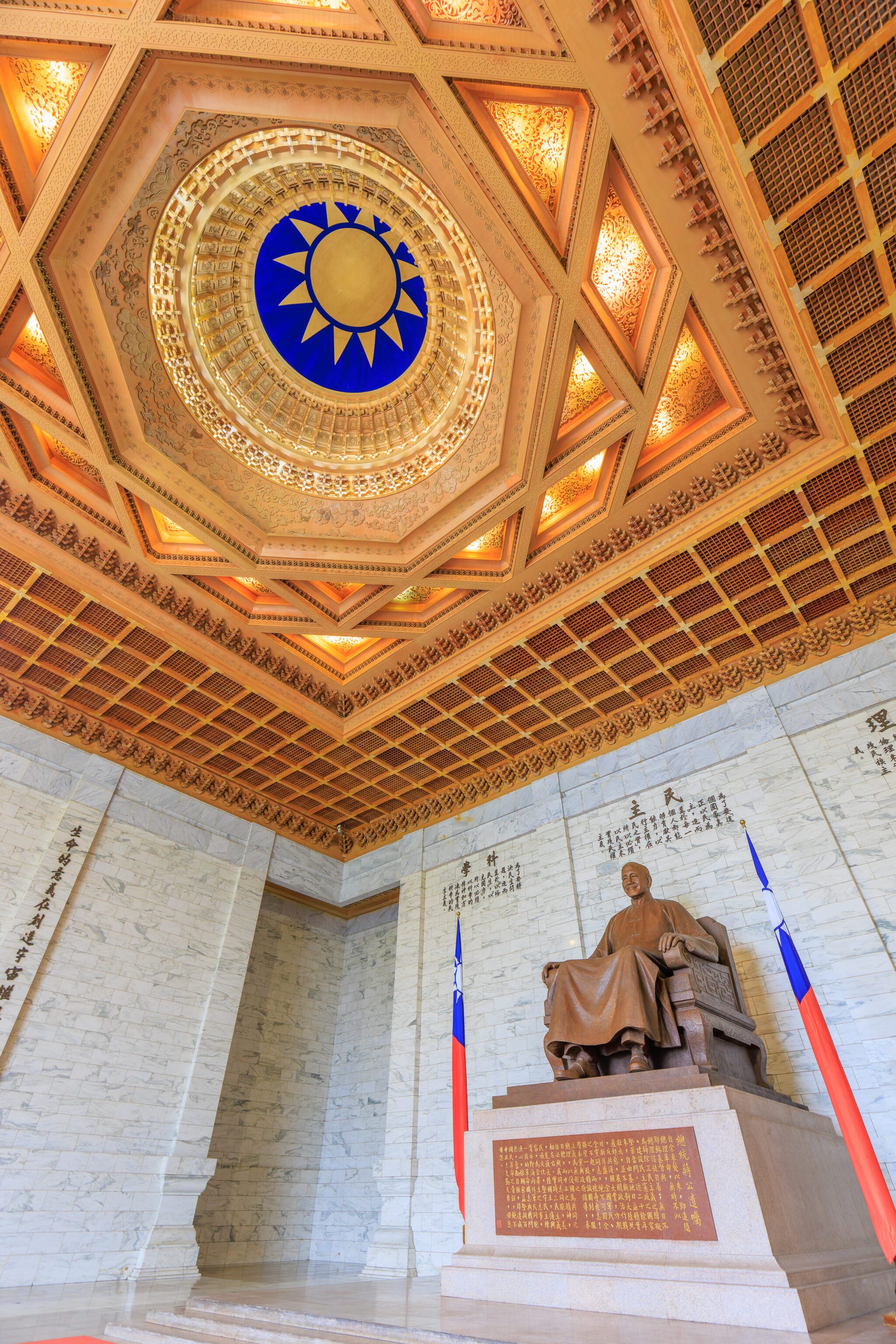
A wide angle view showing both the emblem above and the statue in front of us.
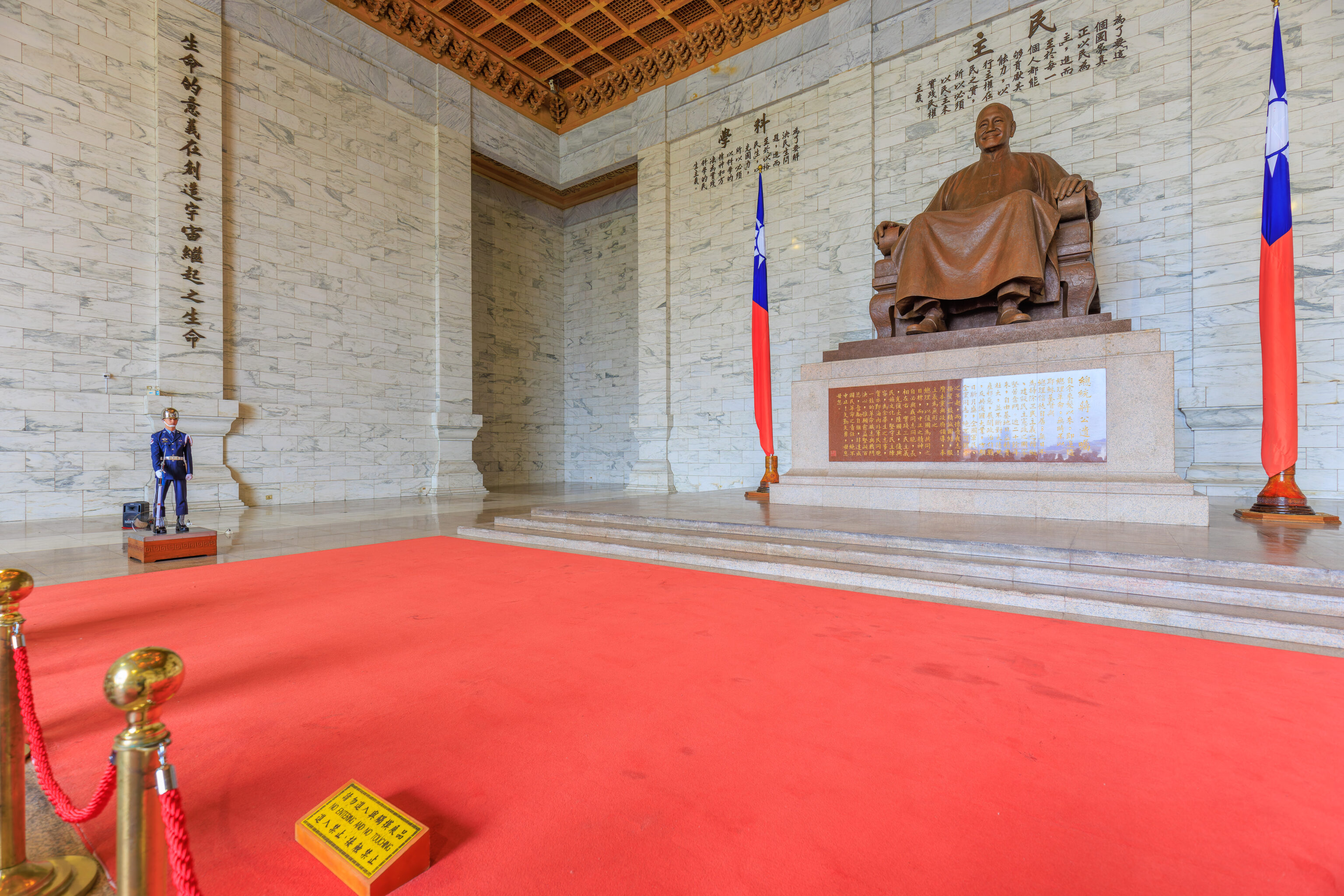
The statue and one of the two guards flanking it. The setup was basically just like the National Dr. Sun Yat-Sen Memorial Hall.

We went to the left side as they started to get ready for the guard changing ceremony.

We got a nice spot right by the rope barrier.

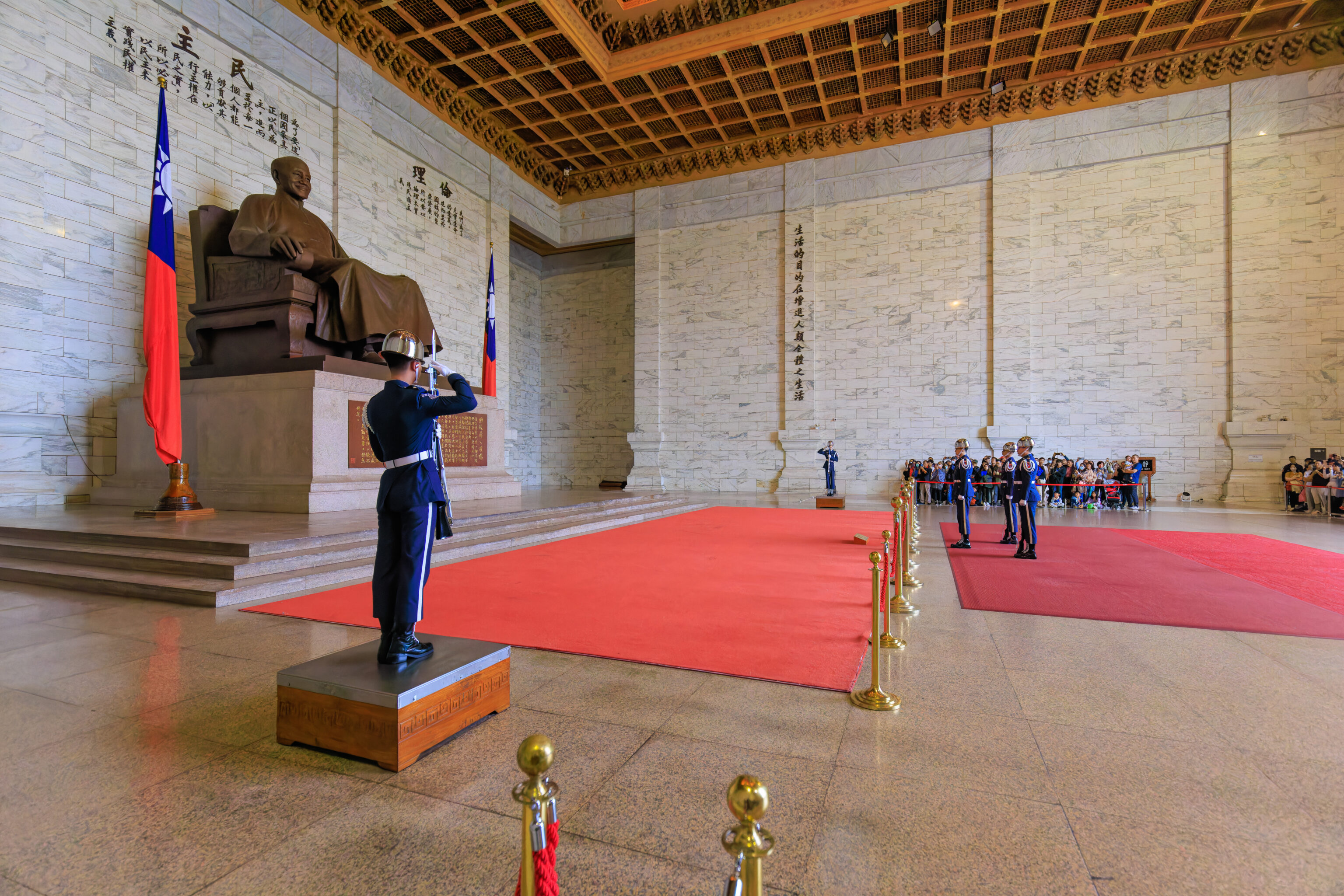
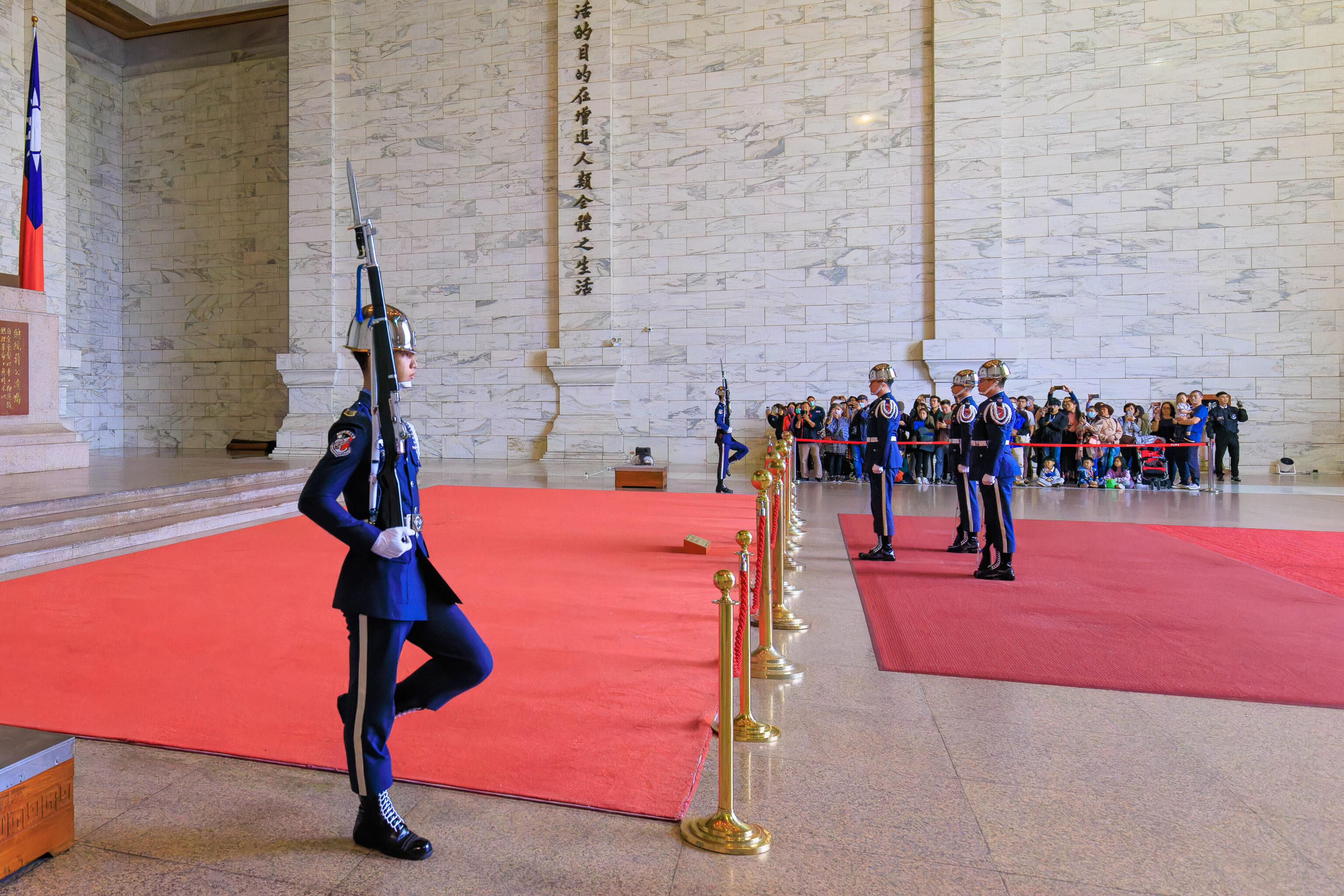


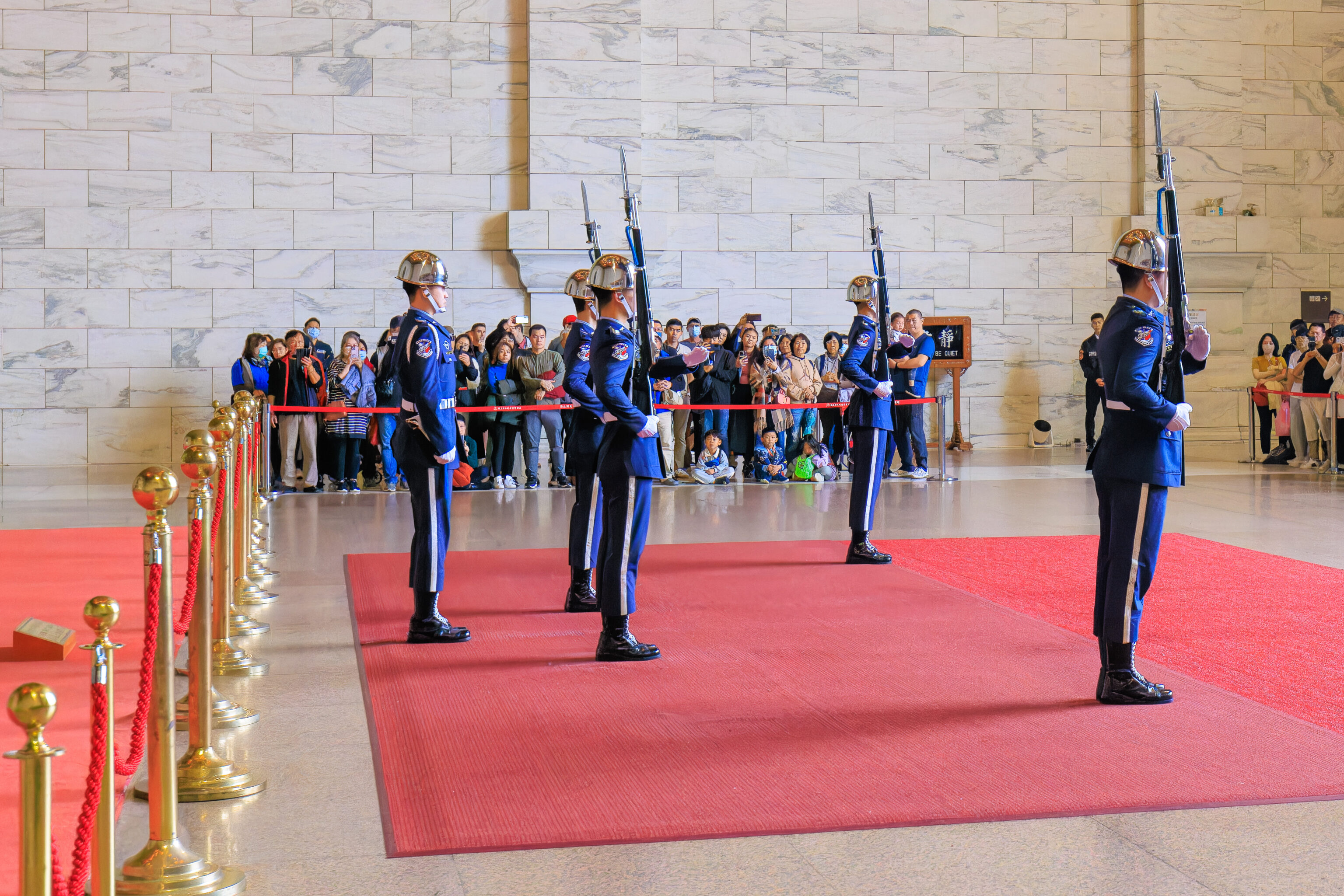

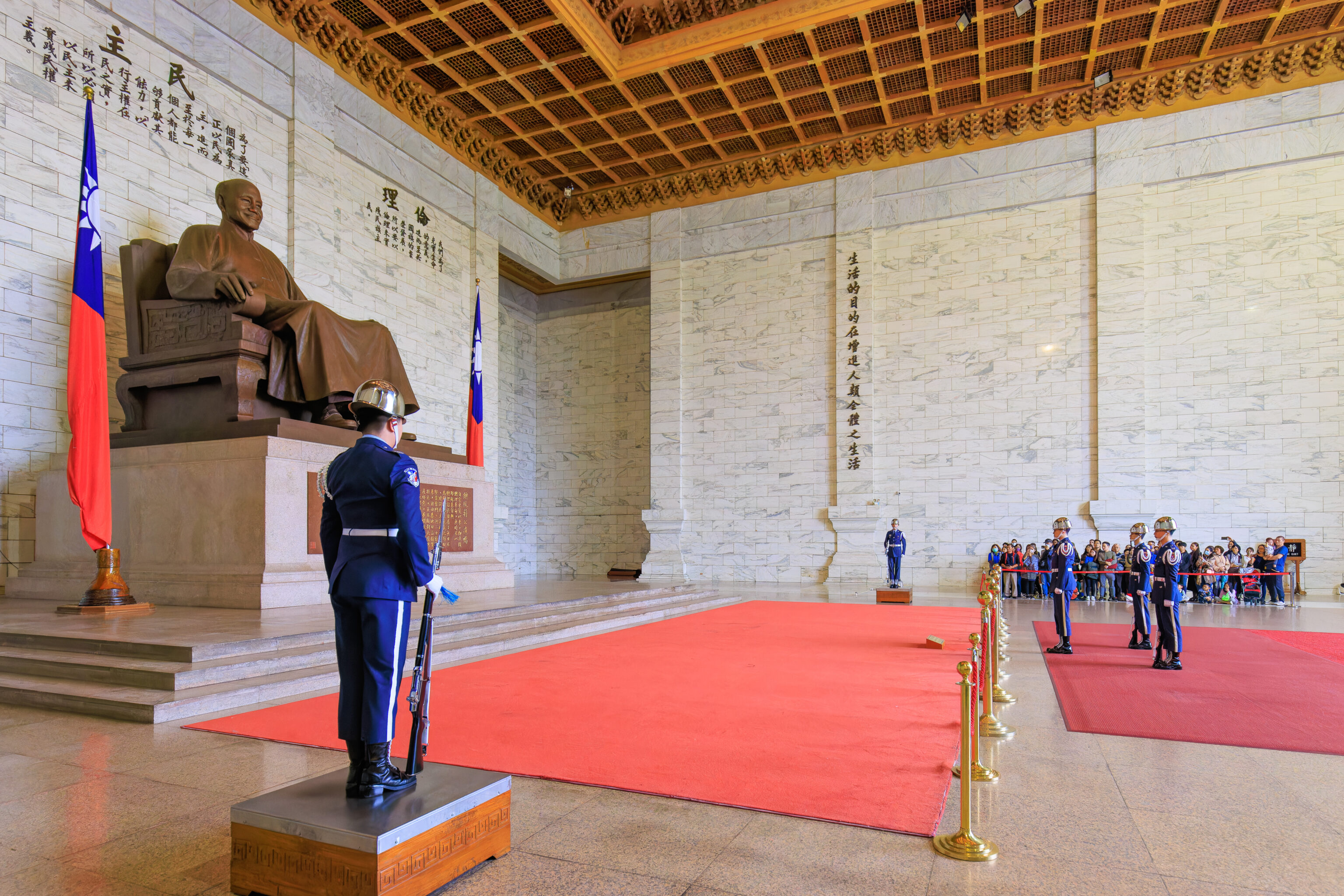
The guard change was almost exactly the same as at the National Dr. Sun Yat-Sen Memorial Hall. The difficulty level actually seemed to be a bit lower.

We went outside to take a look.

There were many people around but it never felt crowded, likely due to how vast everything is here.

There are two smaller gates on the north side, seen here, and the south sides of the memorial hall. After our brief look outside, we went back in and down to the ground floor. We browsed the small gift shop for a bit before leaving.

There are gardens on the north, east, and south sides of the memorial hall. We walked through the southern one as we headed back to the MRT station.
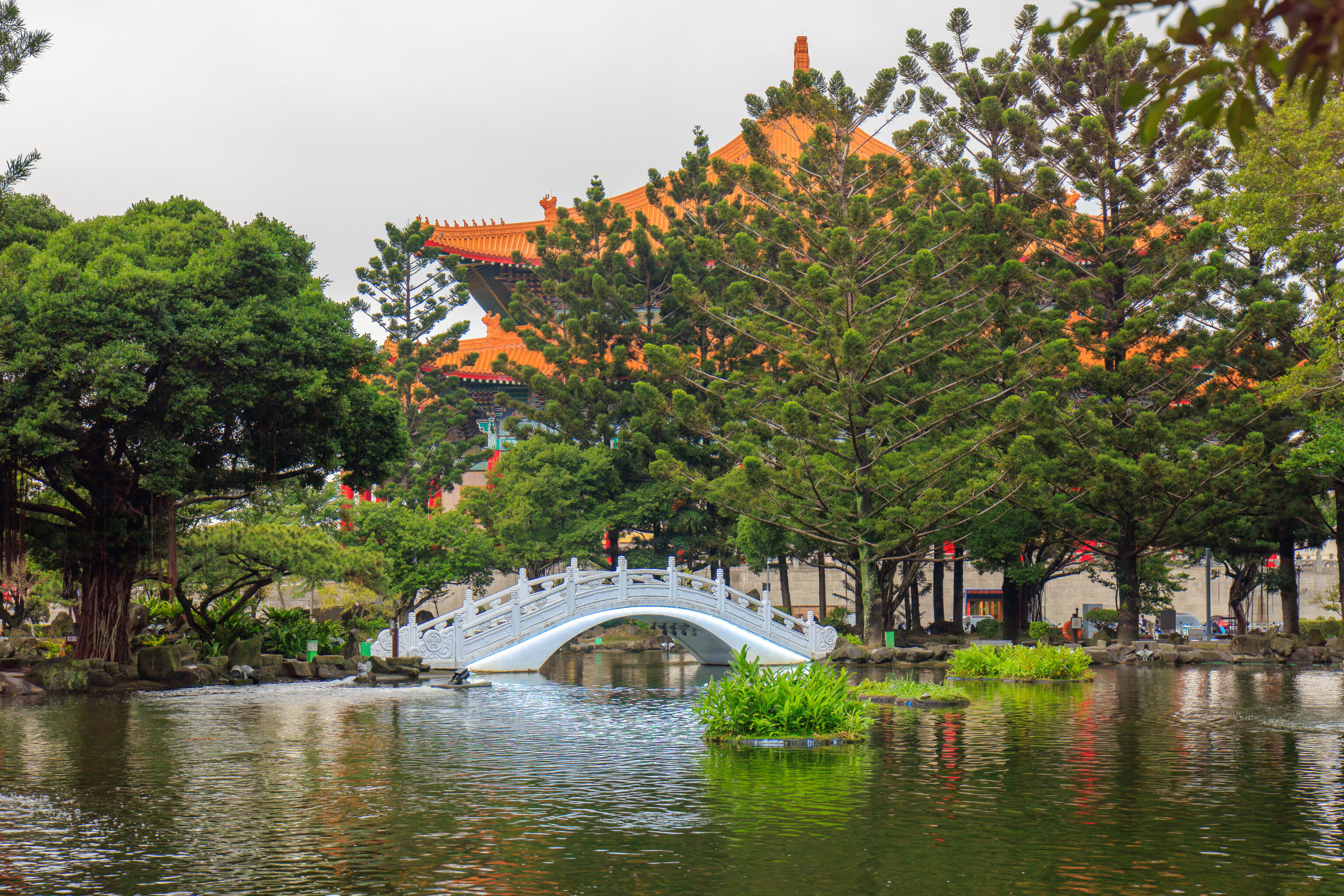
It was around sunset, not that one could tell due tot the dark, overcast skies. We walked by a small pond with an illuminated arched bridge going over it. It started to rain harder as we got close to the MRT station.
Dinner
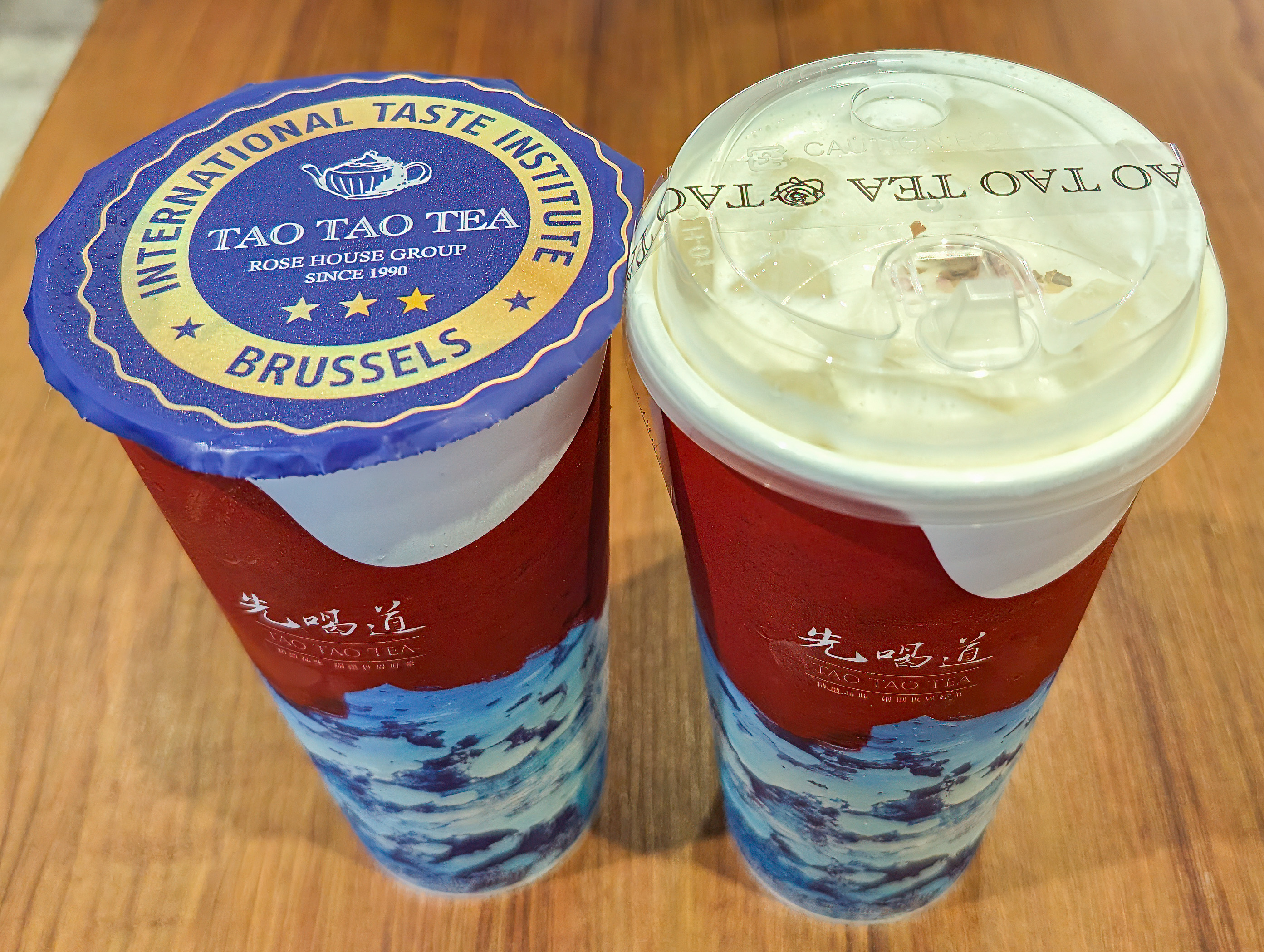
We had some extra time before our dinner reservation at Jumbo Seafood, located at the Shin Kong Mitsukoshi in Xinyi, Taipei, the same district as Taipei 101 and the Grand Hyatt where we are staying. We decided to take the MRT to Taipei 101 and have some tea from Tao Tao Tea.

Jumbo Seafood is a restaurant from Singapore. We’ve been to their location by Clarke Quay. They are famous for their chilli crab, a Singaporean, and Malaysian, specialty. It is incredibly hard to find in the US, we don’t actually know of any restaurants in our region that serve it. There was one restaurant, Jiwa Singapura, that had it at Tysons Galleria in Virginia but they closed after only 10 months. We went there once when it had just opened and it was extremely disappointing, partly due to their poor choice of crab species and partly due to it having insufficient flavor as well as it being extremely expensive.

We started with some salted egg shrimp. We’ve only really had a few salted egg products but do enjoy Irvins salted egg chips, which are available in the US at some Asian supermarkets. The fried shrimp with cereal that we got in Singapore was a better choice. Sometimes, it is interesting to try new things, but it can be just as good to stick with proven, solid choices!
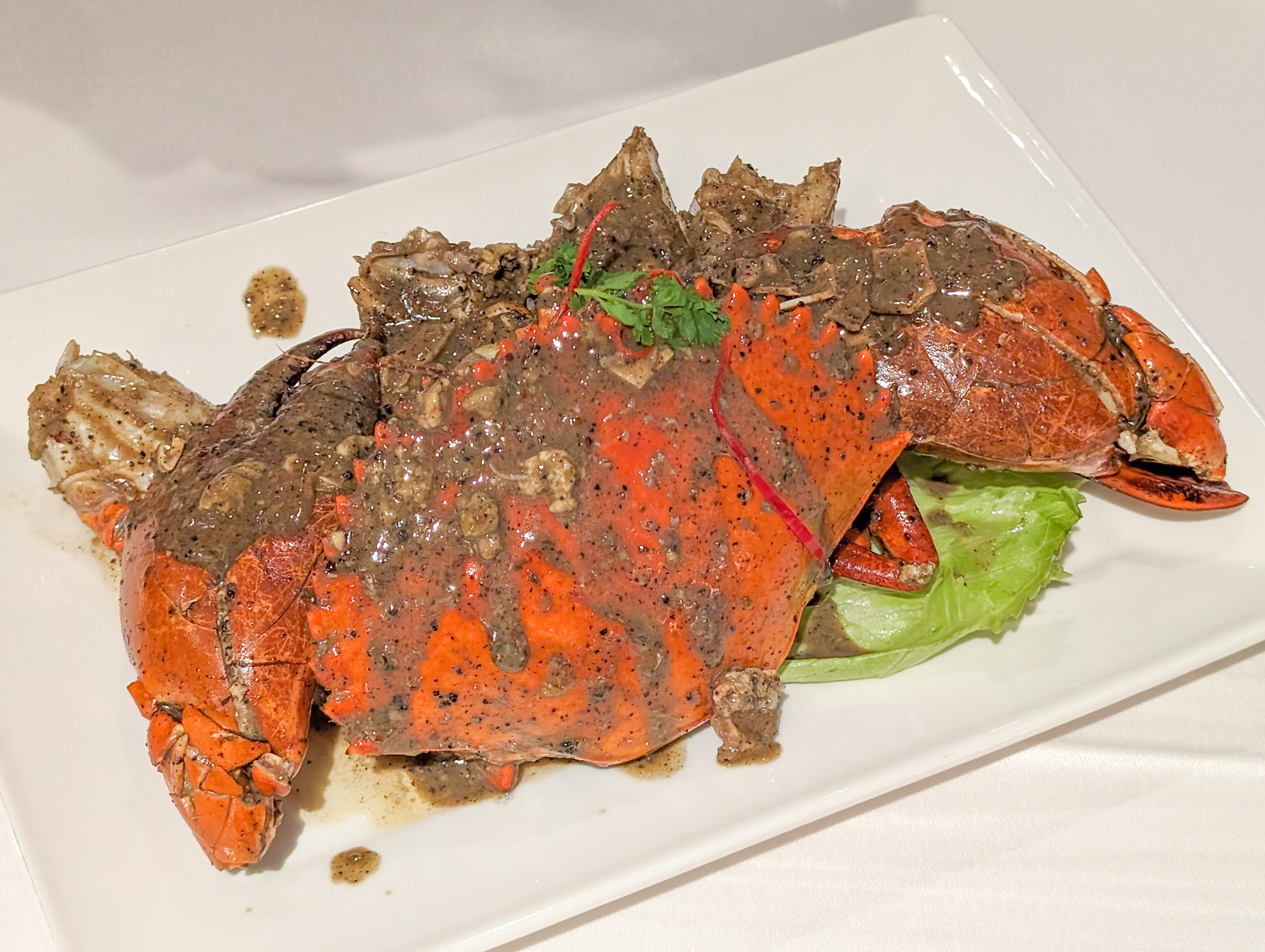
Soon, the first of two crabs that we ordered arrived. At Jumbo Seafood, you can pick the type of crab as well as the preparation style. This one is a mud crab with black pepper sauce. We had wanted to try it in Singapore but did not have an opportunity to. There’s only so much we can eat! While it was good, we felt it wasn’t as good as the chilli crab. Visually, it also doesn’t look as appealing.

Soon, the main event! The chilli crab! Also a mud crab as that is the standard crab for this dish. It was very good, though not spicy enough. In Singapore, they had asked how spicy we want it, but they did not here. We’re not sure if they forgot to or if there is a just a standard spice level here. It was still delicious though, just could have used more heat.

After our dinner, we started to walk back to the Grand Hyatt. On our way from Taipei 101, we walked outside along the street. This time, we stayed within the various shopping malls in the area. We were surprised to find a Texas Roadhouse! We almost never visit American restaurants while overseas. Unfortunately, the menu doesn’t seem to have prime rib which is one thing they do surprisingly well for a chain restaurant. Do they have the rolls which are somehow reliably amazing? It does seem ridiculously expensive though at 2600 NTD for a 20oz ribeye, that’s about $80 USD!

A short distance away, we noticed a Movenpick Cafe. Movenpick is a Swiss brand of ice cream. There is also a Movenpick hotel chain, though it seems they no longer have the same owner as the ice cream was bought by Nestle and the hotel chain by Accor. There is also a TGI Friday’s next door, thought they have more international locations than domestic now2.

We kept on walking to the south along the elevated walkways to come across a Christmas tree.
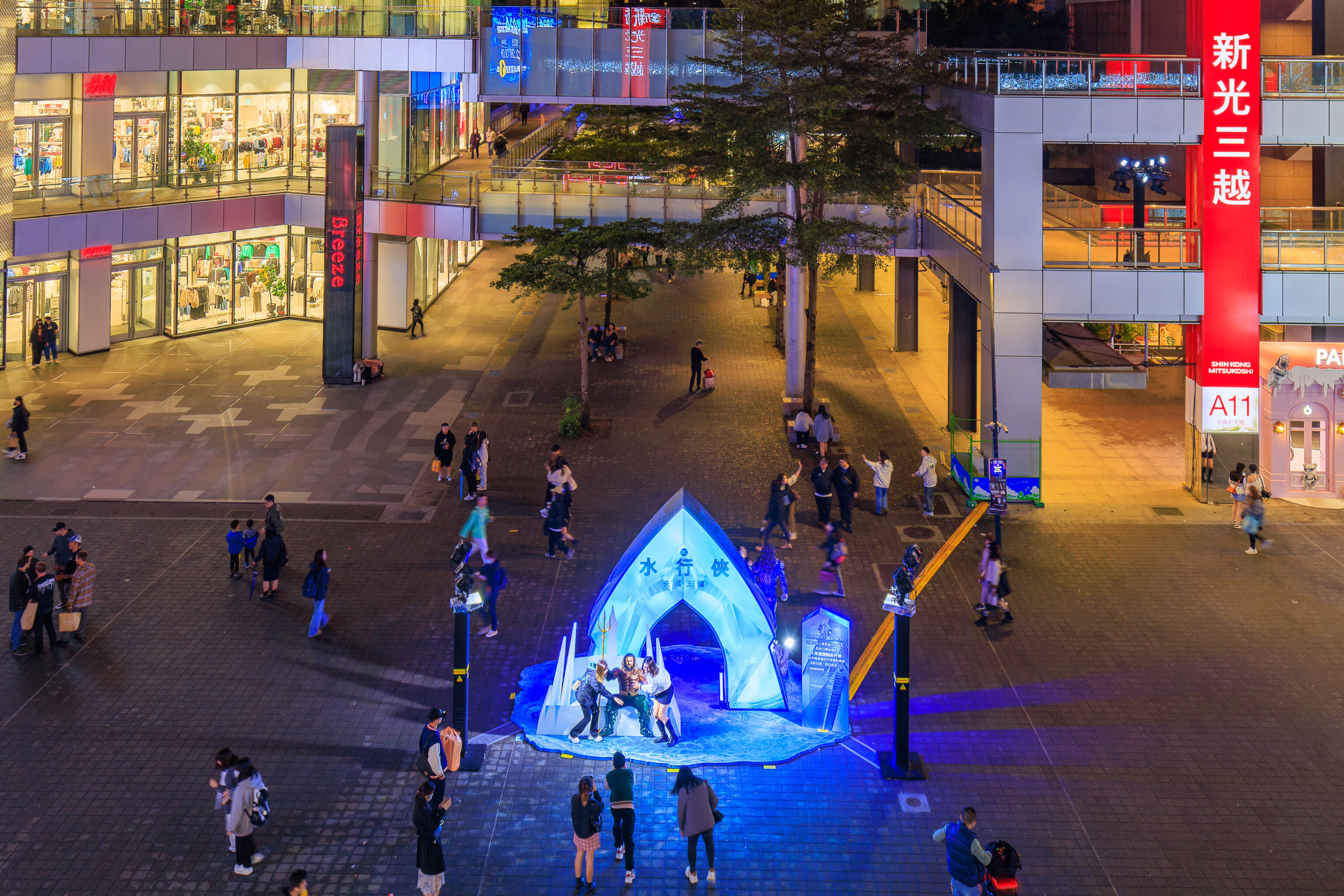
We found Jason Momoa, as Aquaman in Aquaman and the Lost Kingdom, near the tree! This movie came out just before we left for Taipei so we haven’t seen it yet. The promotional display below makes it look like Aquaman meets Frozen!

The Christmas tree is part of a musical light show.
We recorded a small portion of the show. It was getting late though so we didn’t spend too much time here.
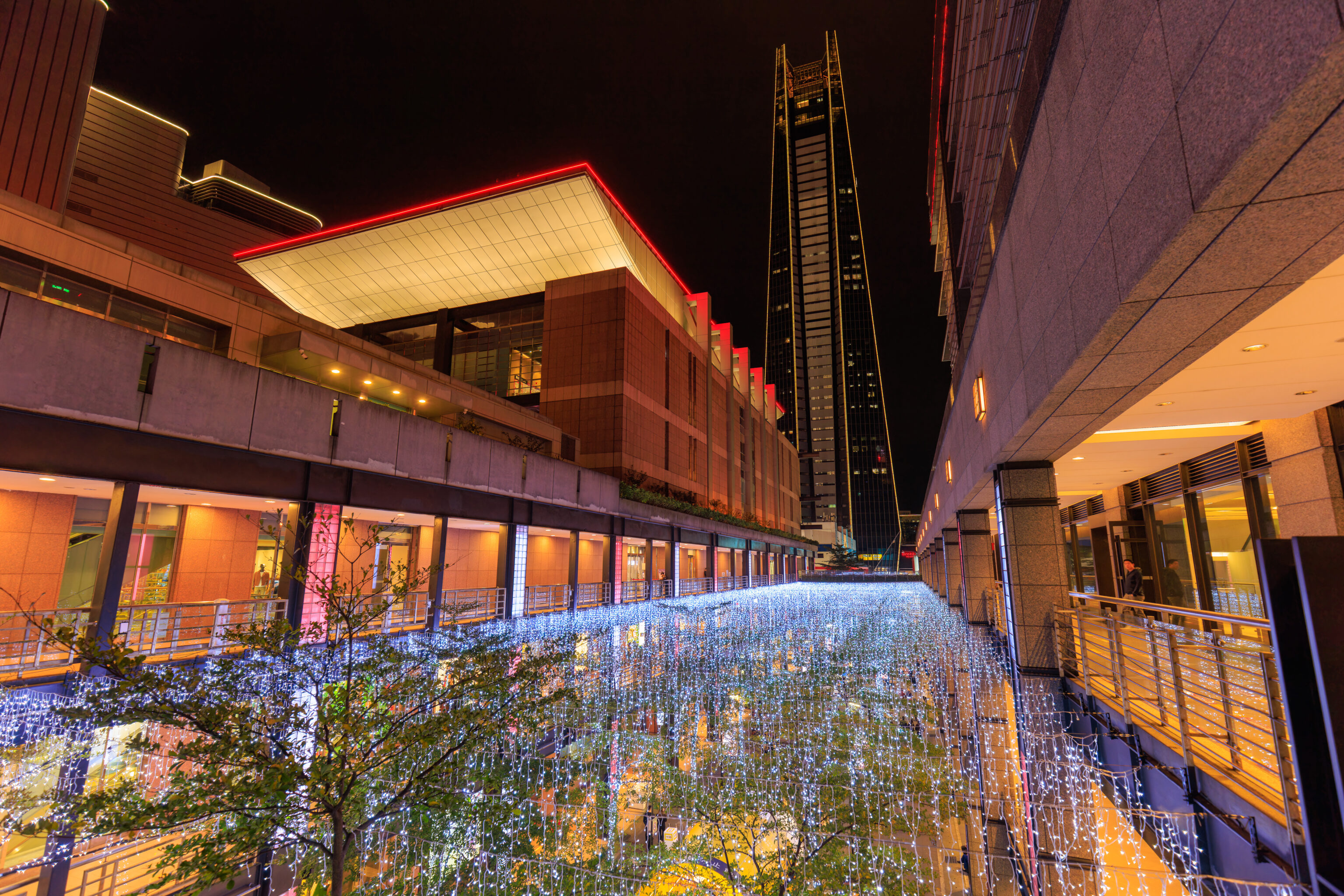
We continued to walk to the south and reached an area with lots of lights strung between the two adjacent shopping buildings.
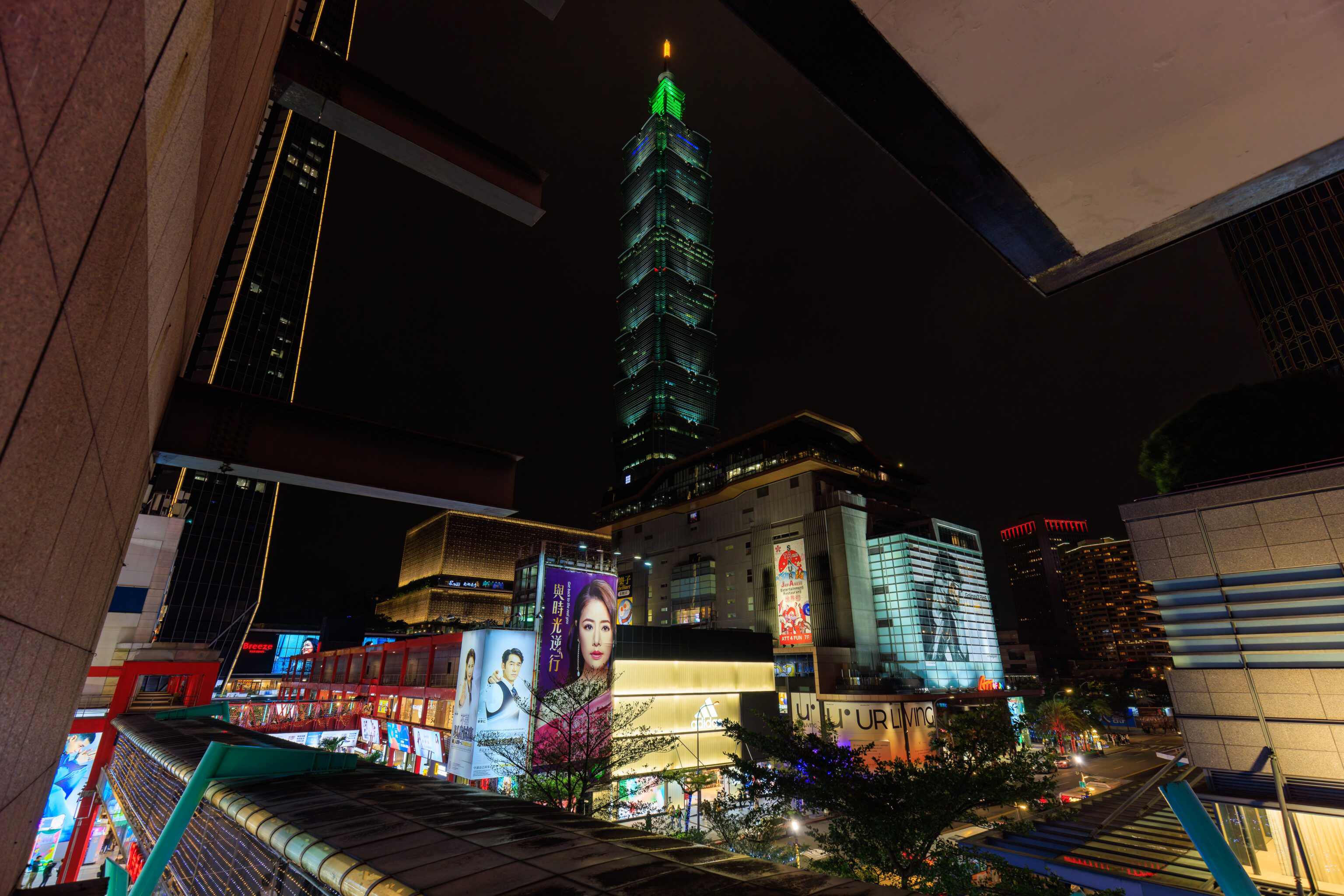

Soon, we had a view of Taipei 101.

The lights from the second floor. We were on the 3rd floor previously when we saw these lights below us.
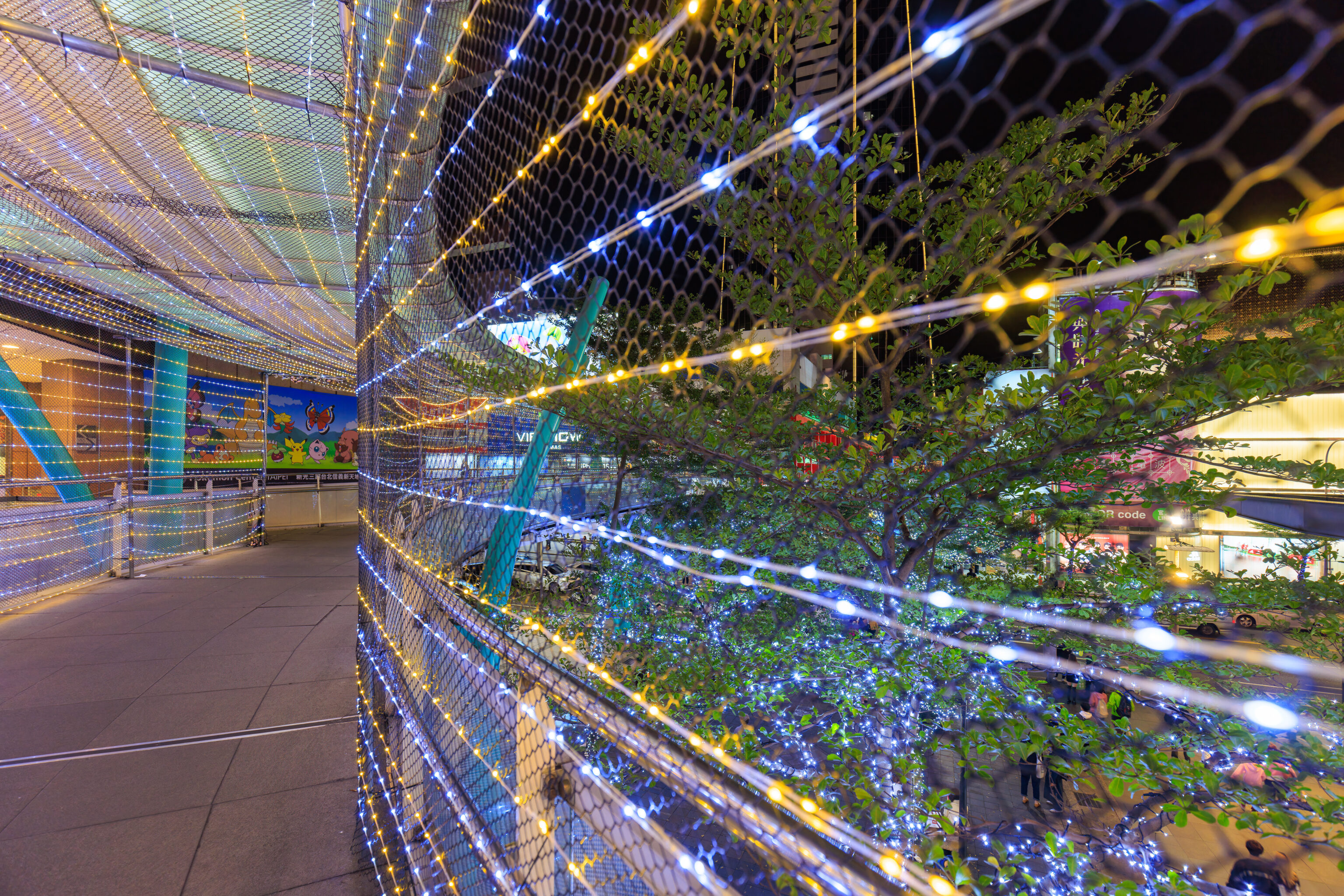
We walked through an elevated passageway that was lined with lights.

Another view of Taipei 101.

Below, we saw an advertisement for Disney’s Wish. It came out in the US on November 22nd but doesn’t come out here in Taiwan until tomorrow, December 29th! If there is one thing Disney is good at, it is promoting its movies. We last ran into Wish in Japan when we visited after Thanksgiving where it was the theme for the 2023 Marunouchi Bright Christmas.
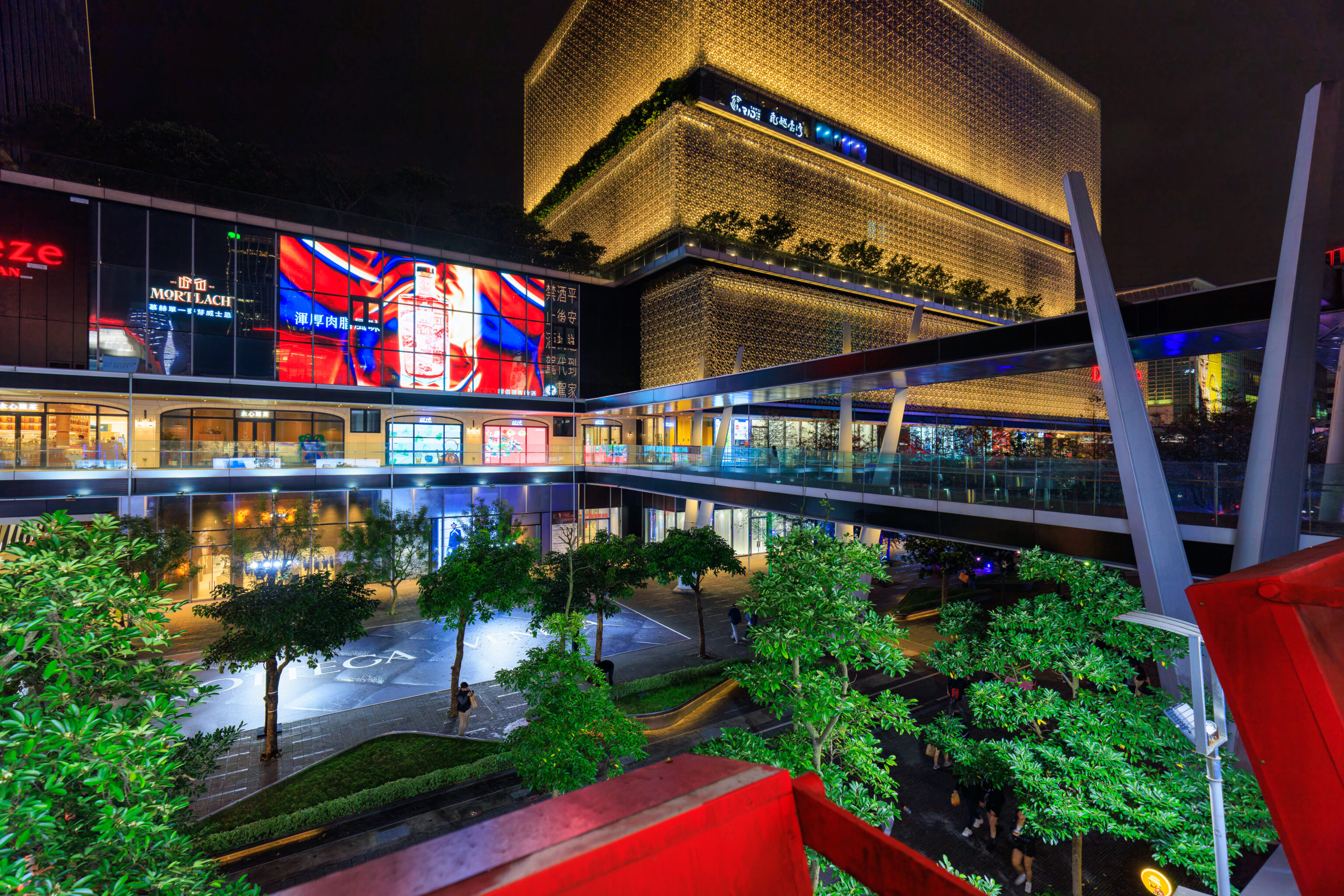
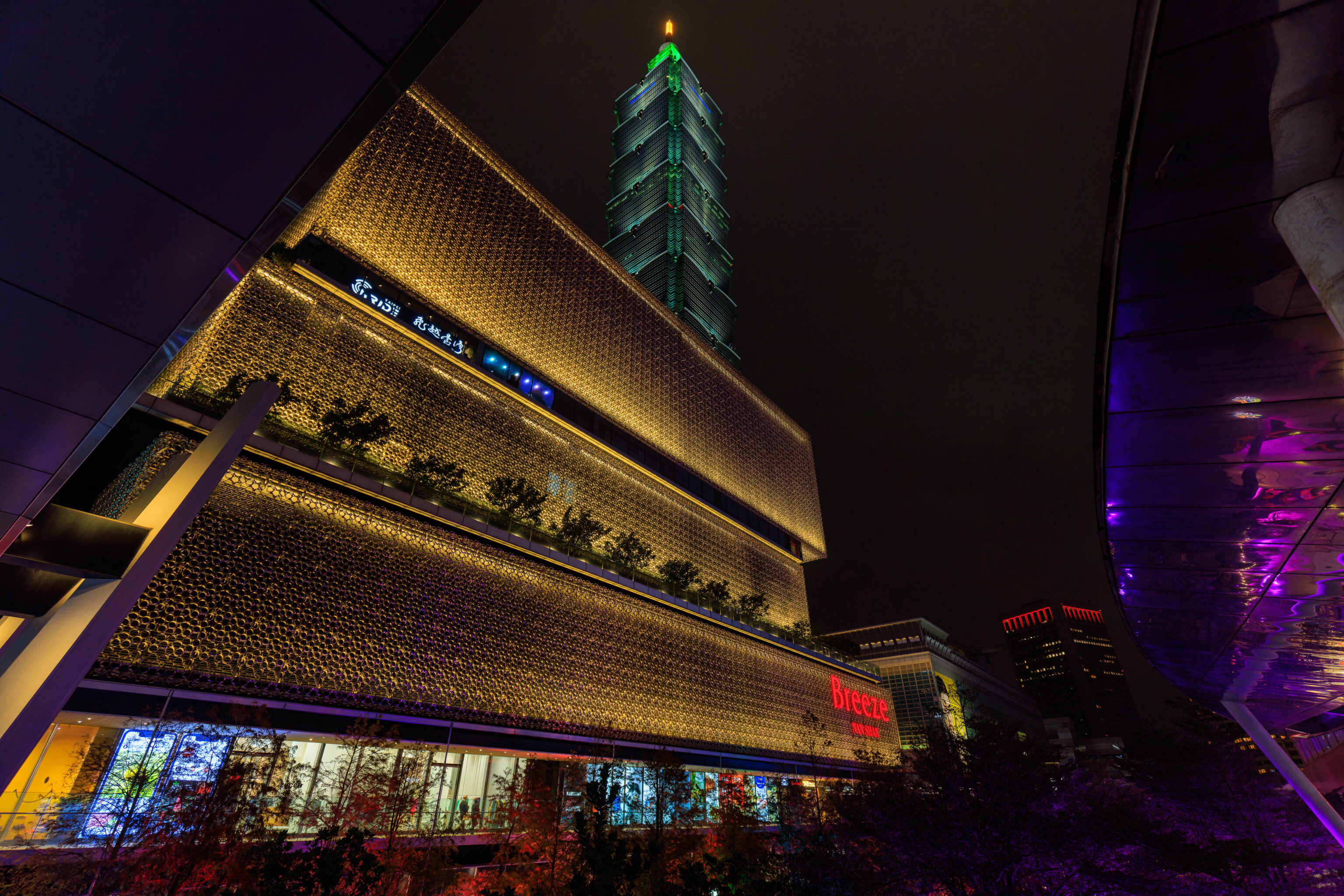
We continued walking to Taipei 101 as it is a very noticeable landmark near the Grand Hyatt. There is a ton of shopping here, more than we have time for!
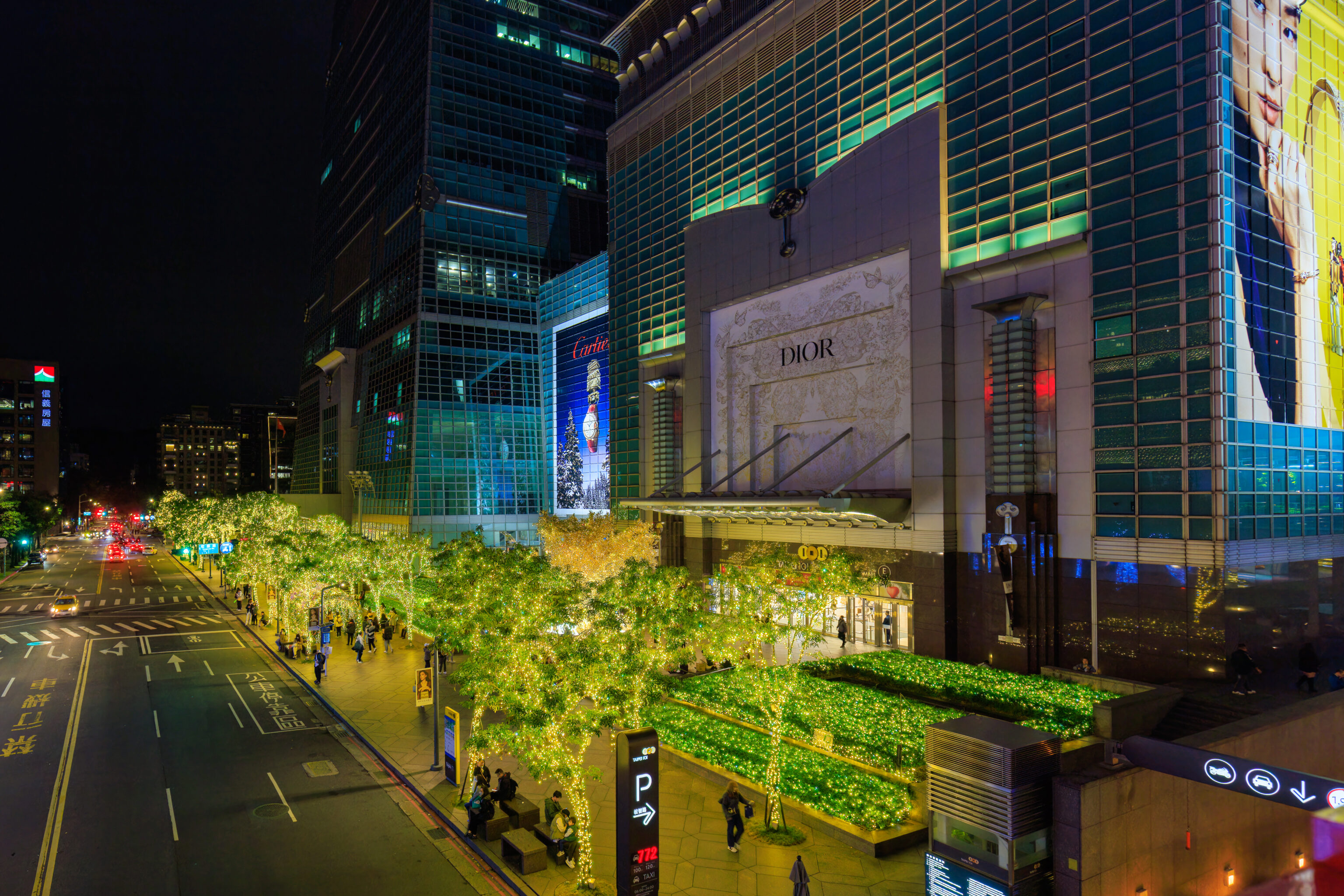
We finally reached the east side of Taipei 101. The Grand Hyatt is on the west side.
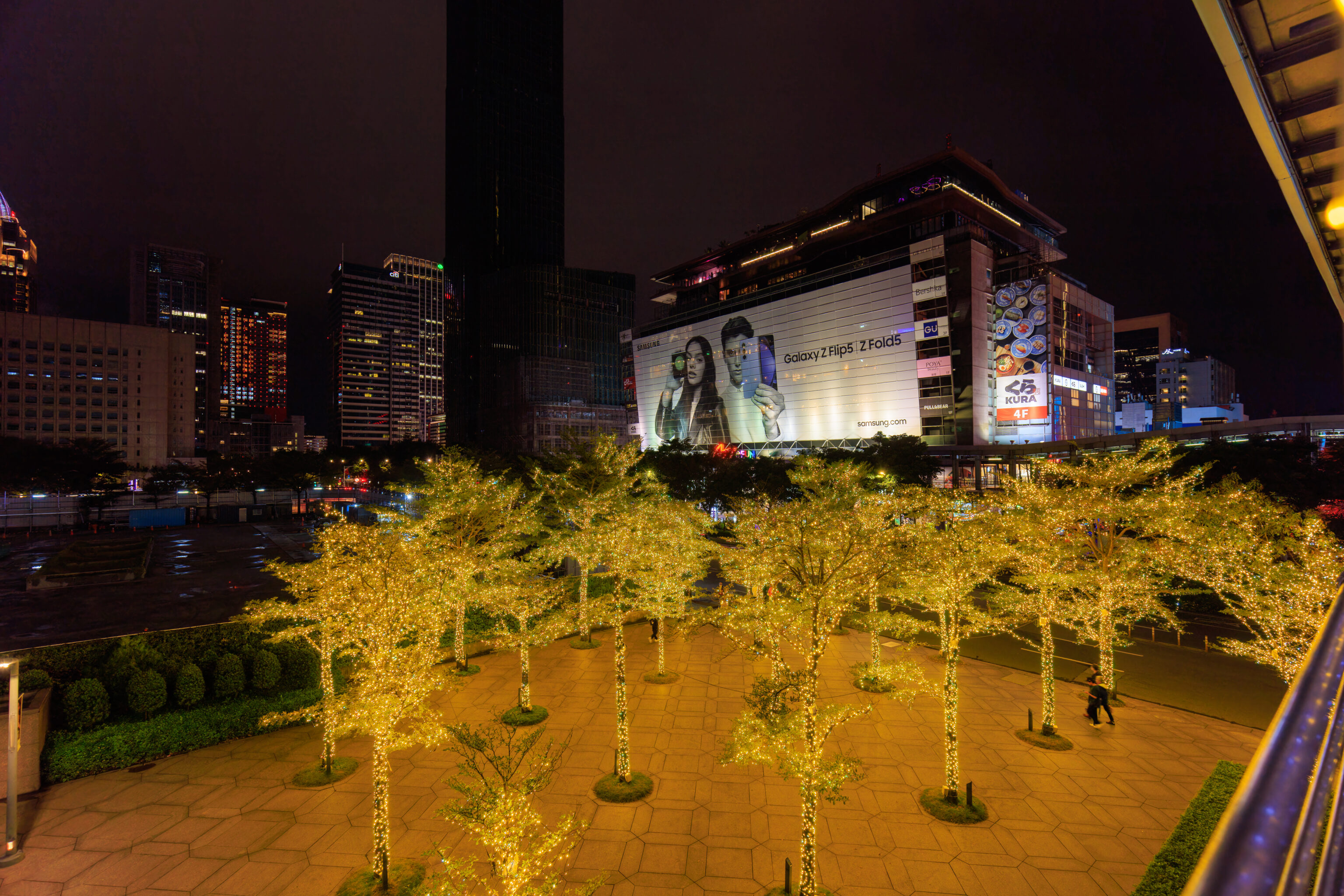
We started walking to the west on one of the elevated walkways. We came from the north, somewhere in the middle of this photo.

The passageway we were on goes into Taipei 101. We could see the Grand Hyatt to the west. It is the building on the right, beyond the Lego area below.
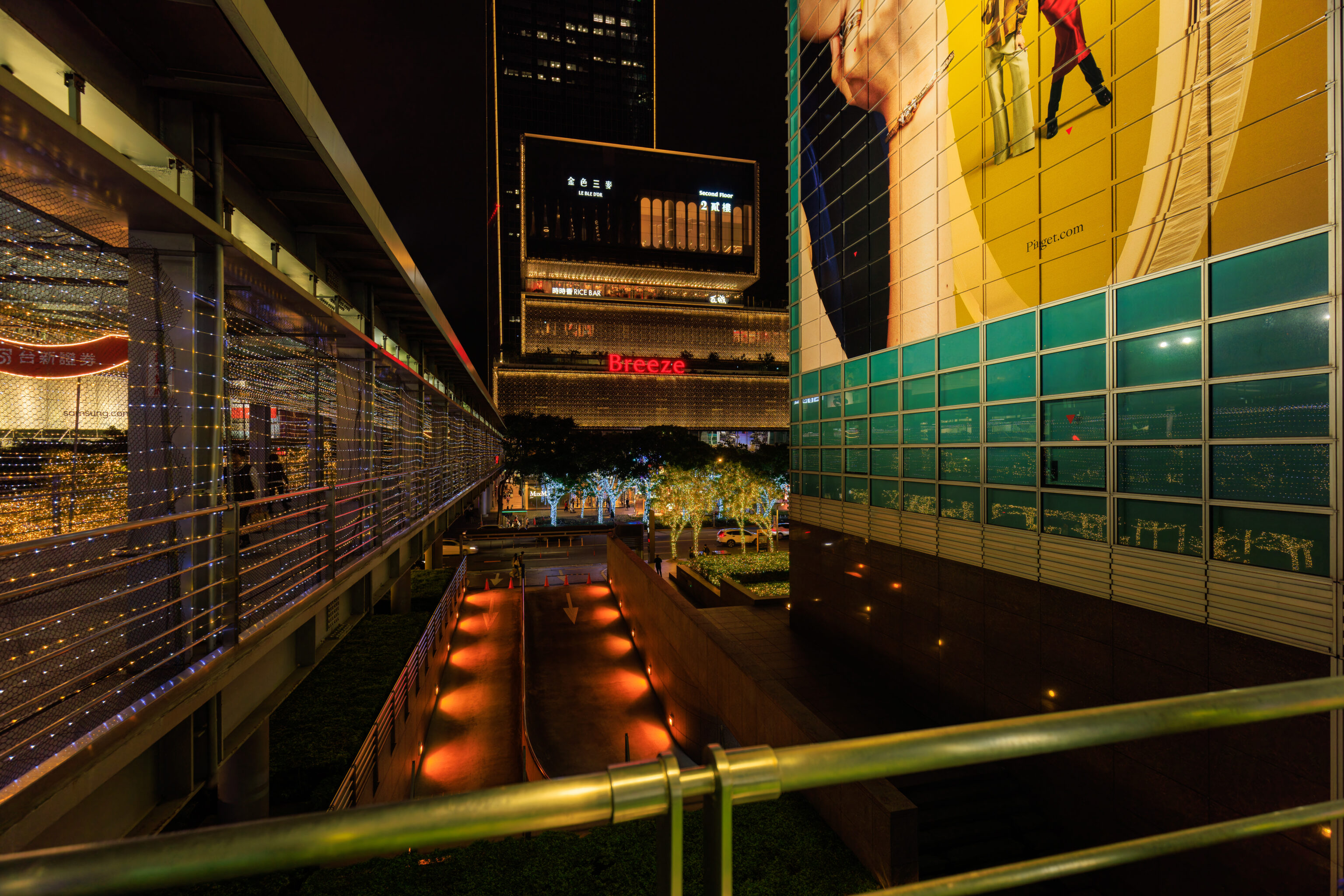
The view to the east as we entered Taipei 101 from the north. We had to talk our way into the building as it was just after the mall’s 9:30pm Thursday evening closing time. They let us take the elevator down into the basement into the food court area where we exited by the MRT station. Everything inside was closed and they were in the process of cleaning up, so there were still people around.
After exiting, we headed back to the Grand Hyatt to end our evening.
Footnotes
- https://en.wikipedia.org/wiki/Liberty_Square_(Taipei)#History ↩︎
- https://en.wikipedia.org/wiki/TGI_Fridays: “TGI Fridays operates over 600 locations in 55 countries, including 233 in the United States.” ↩︎



One Reply to “Sun Yat-Sen and Chiang Kai-Shek Memorials”